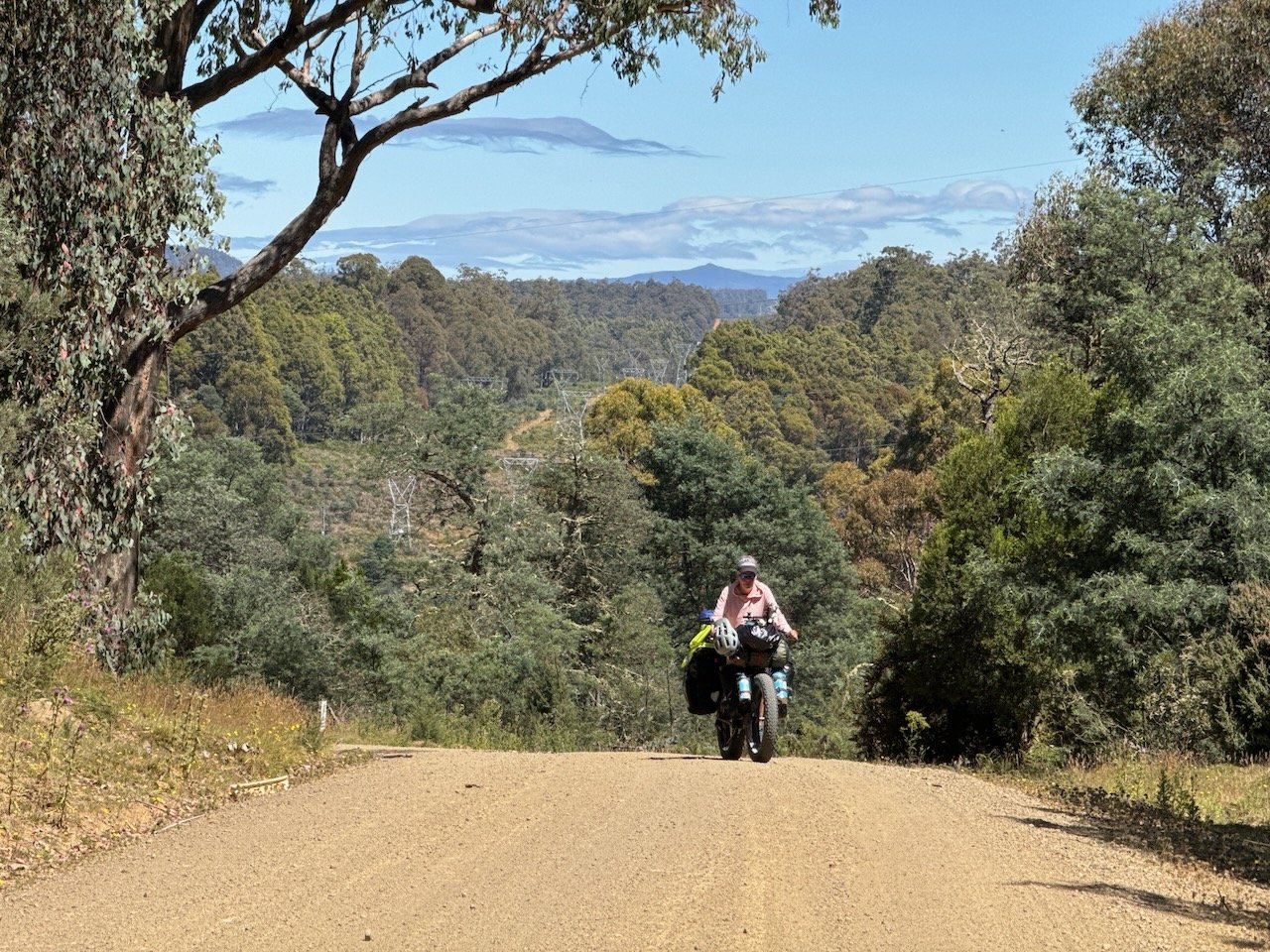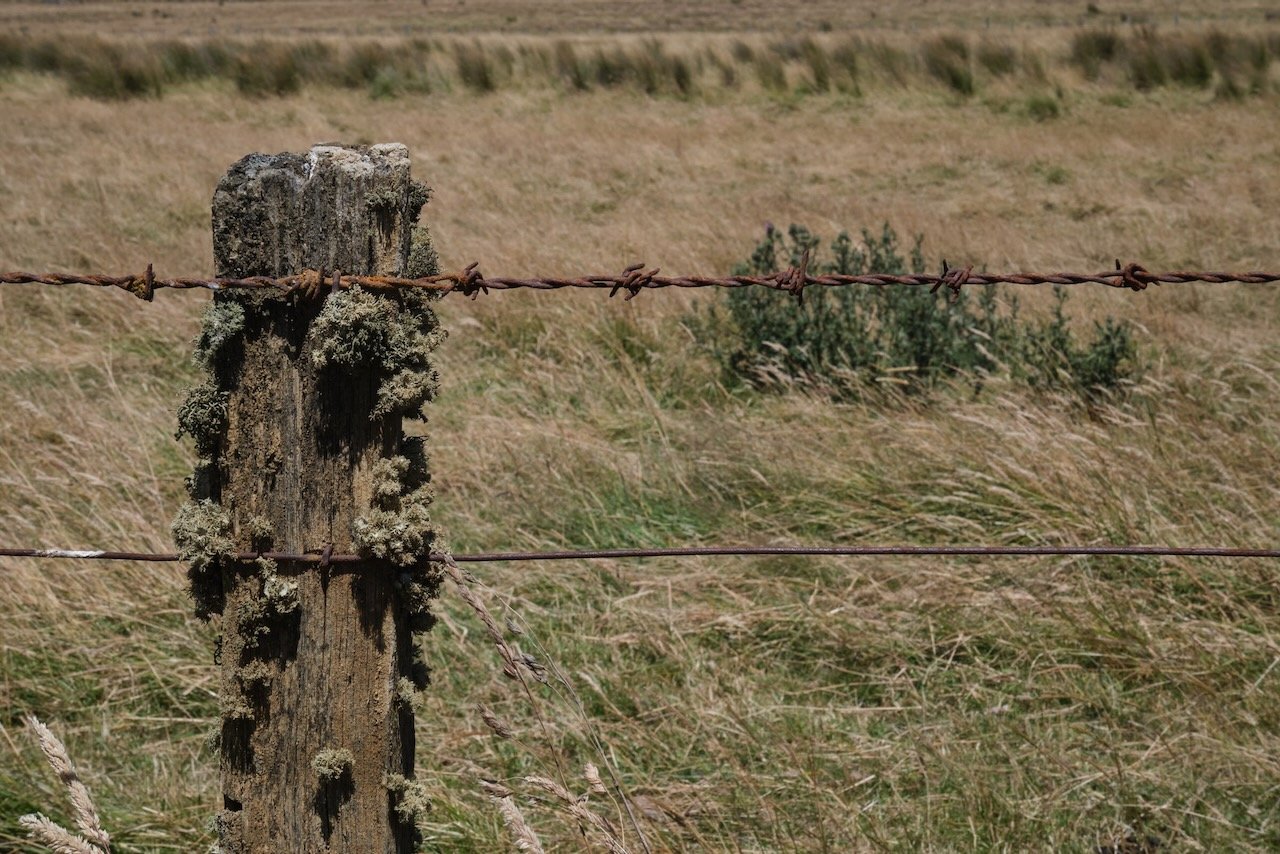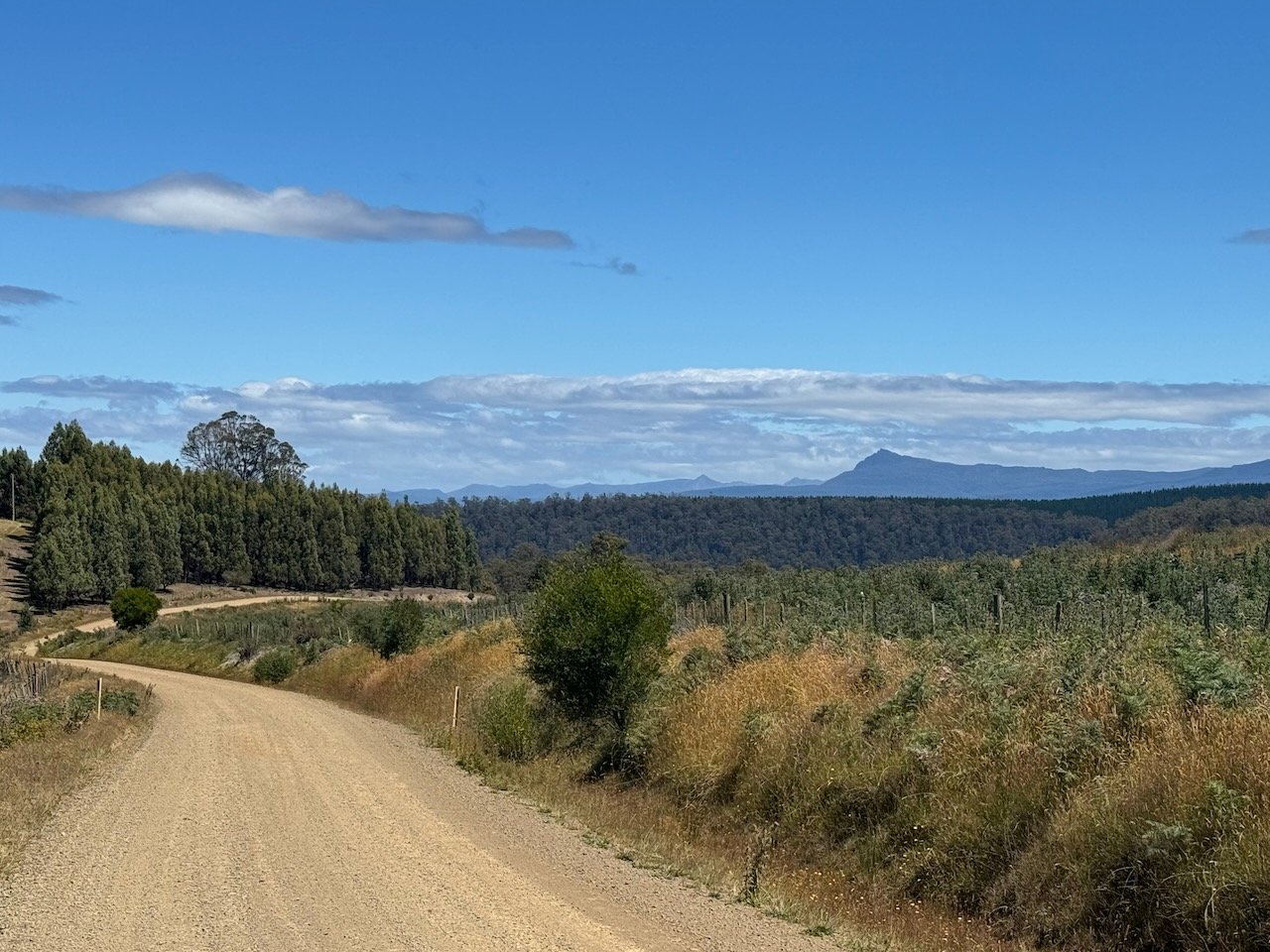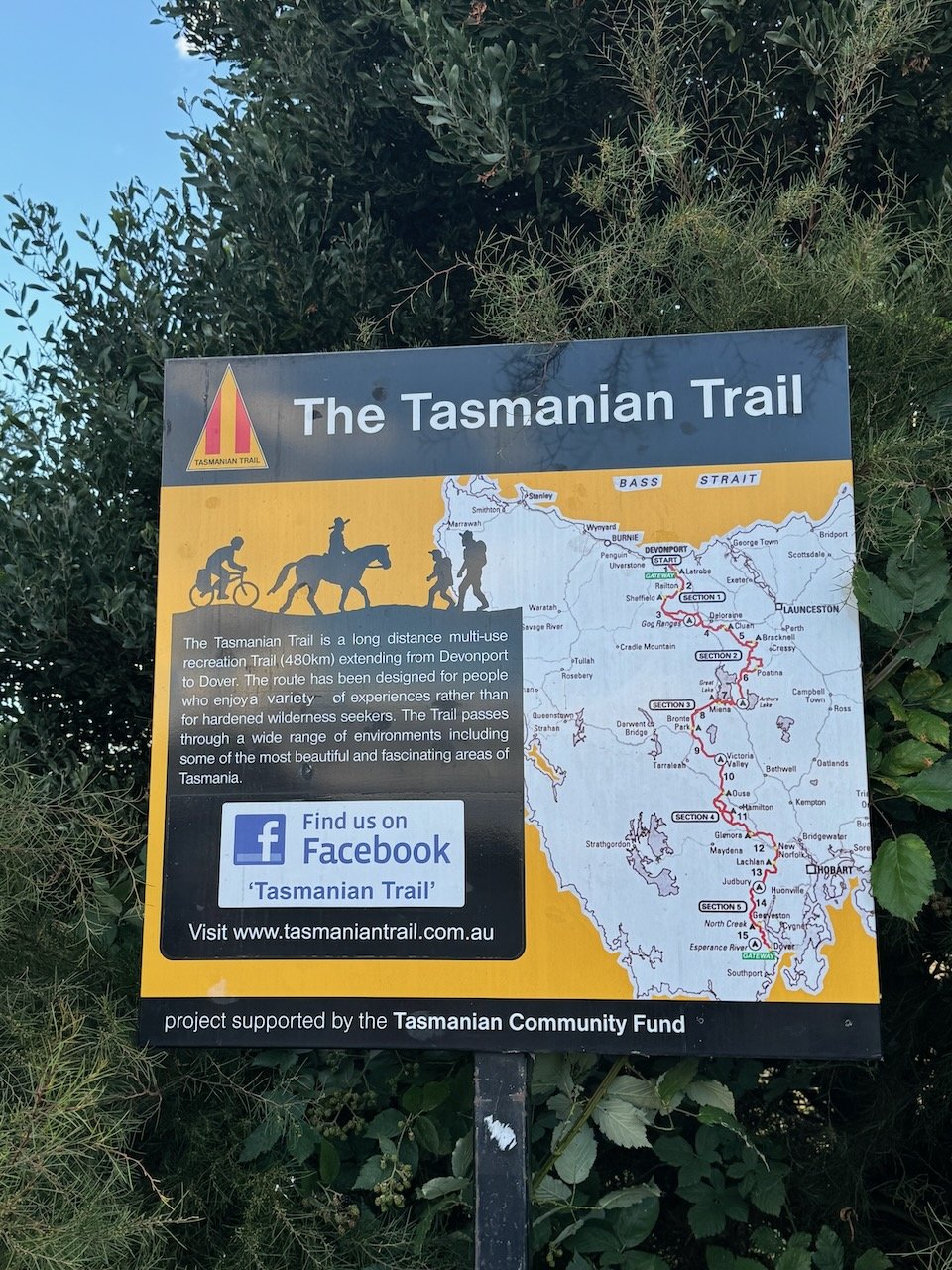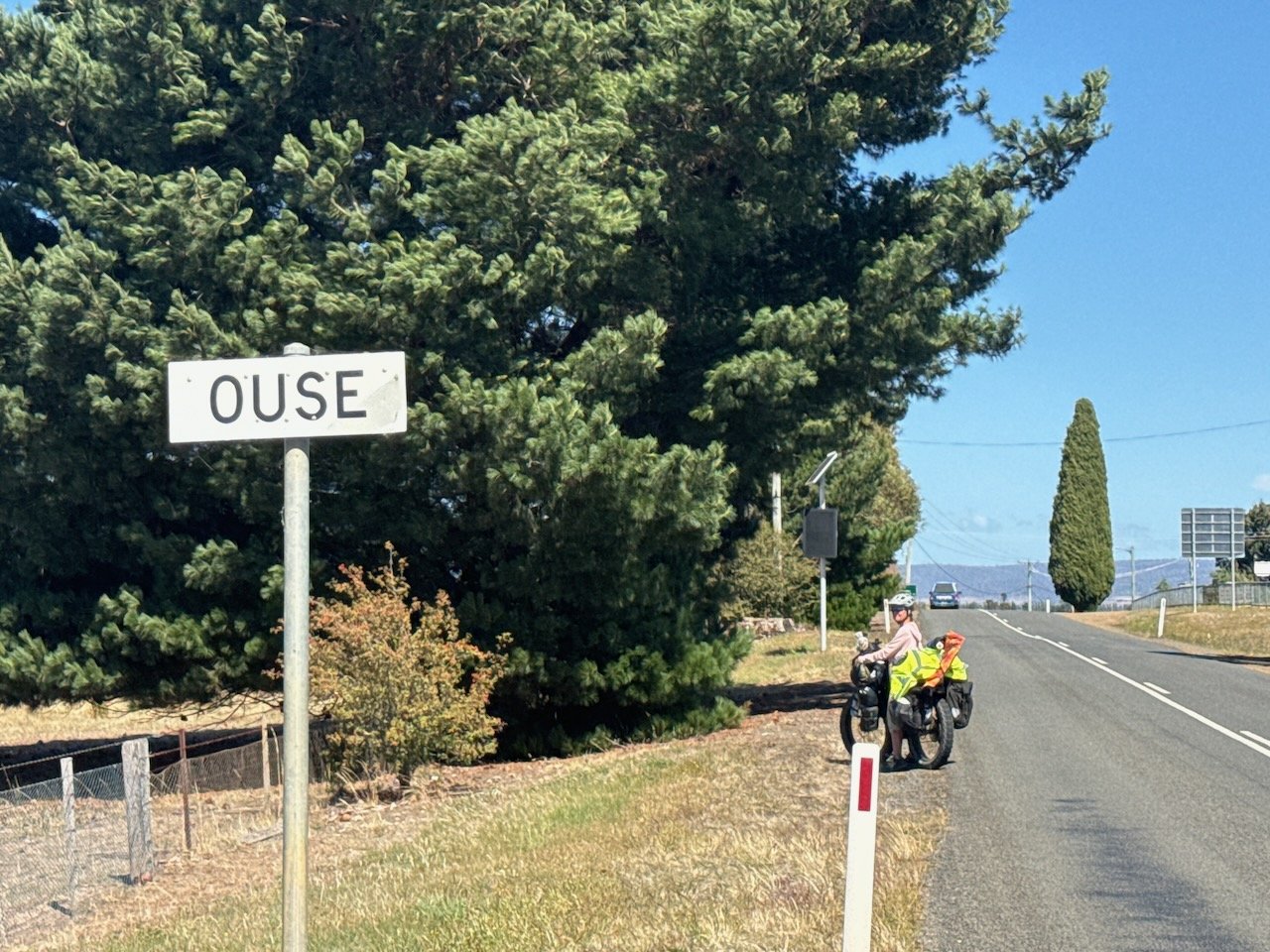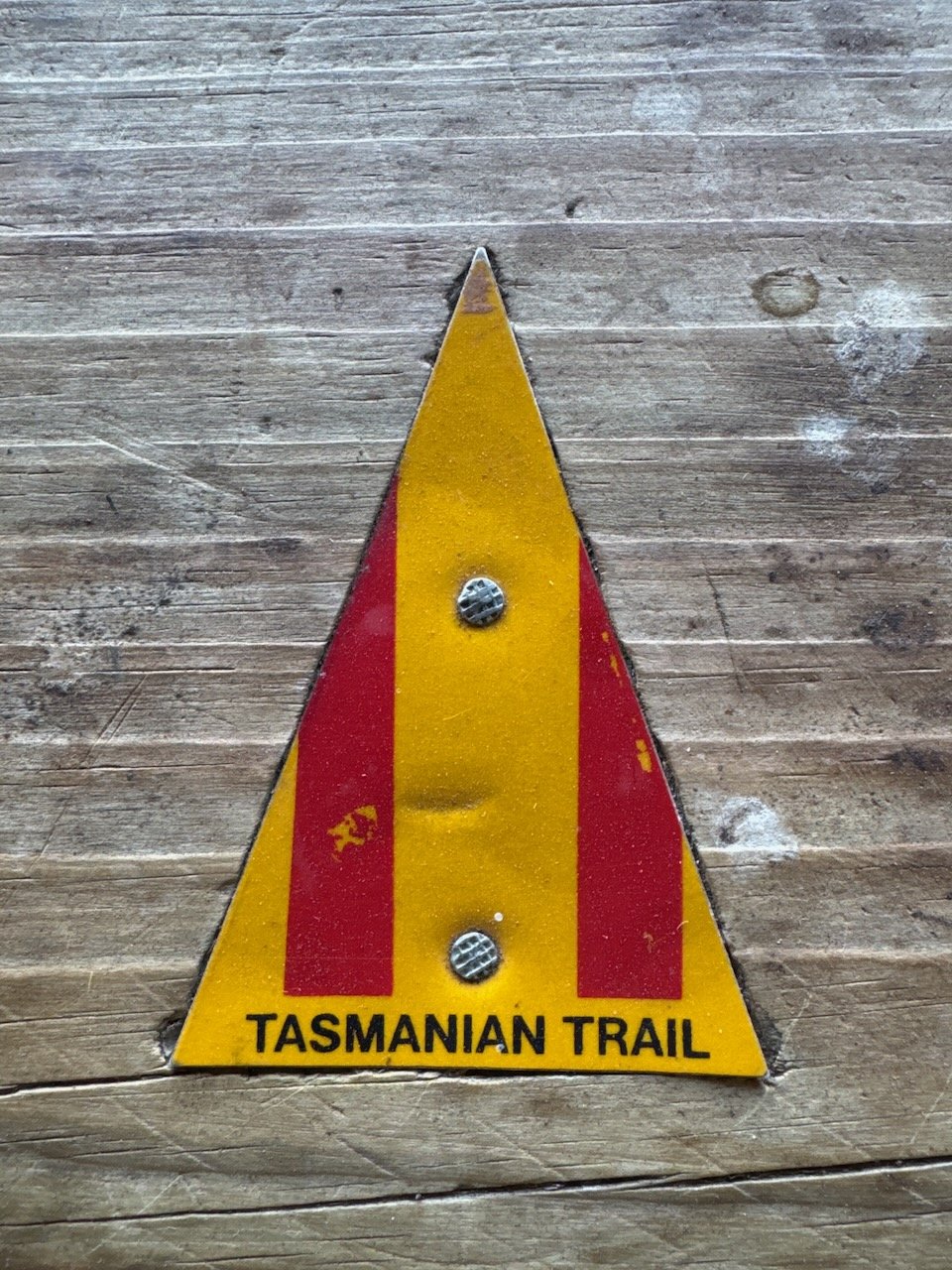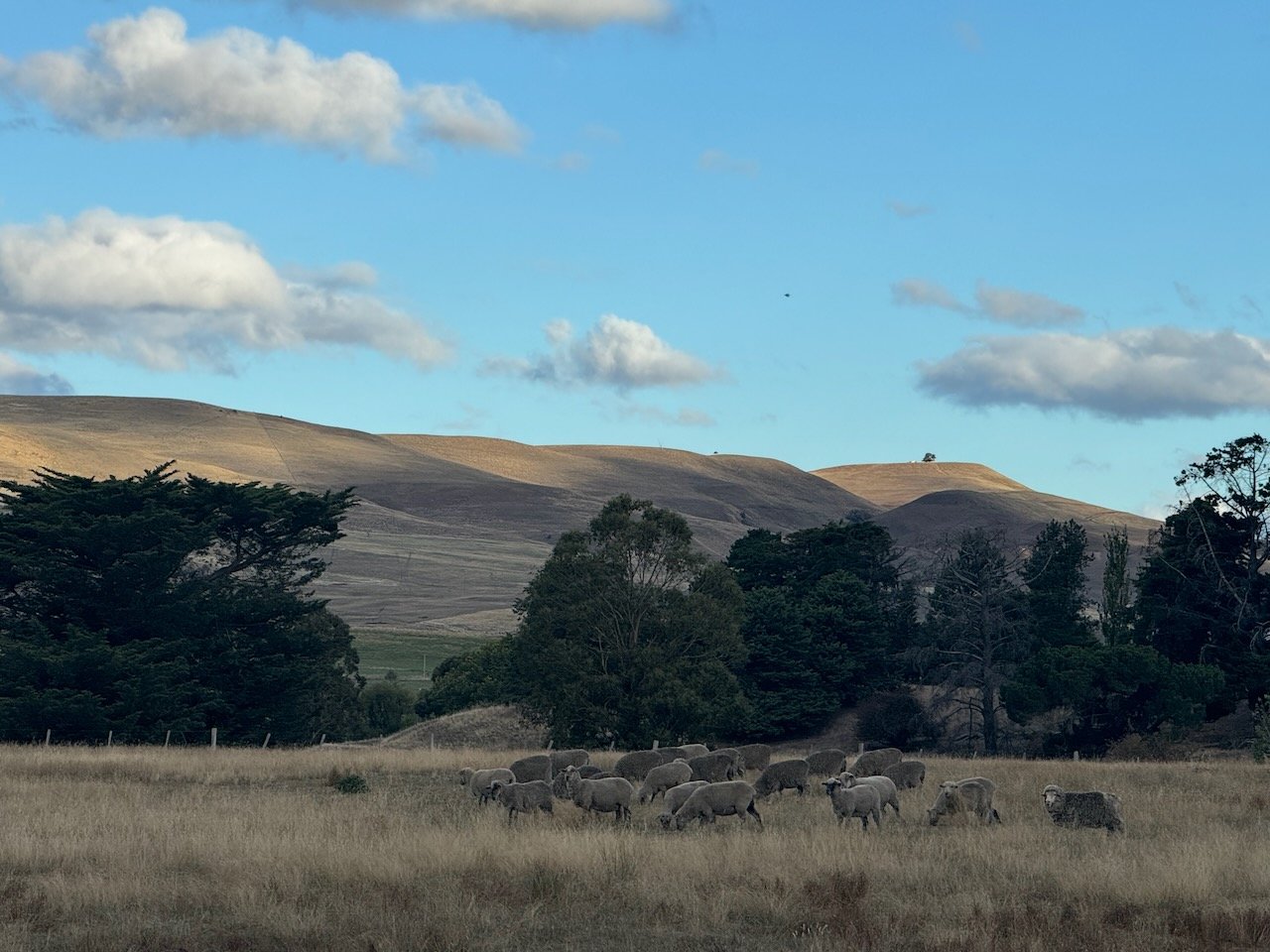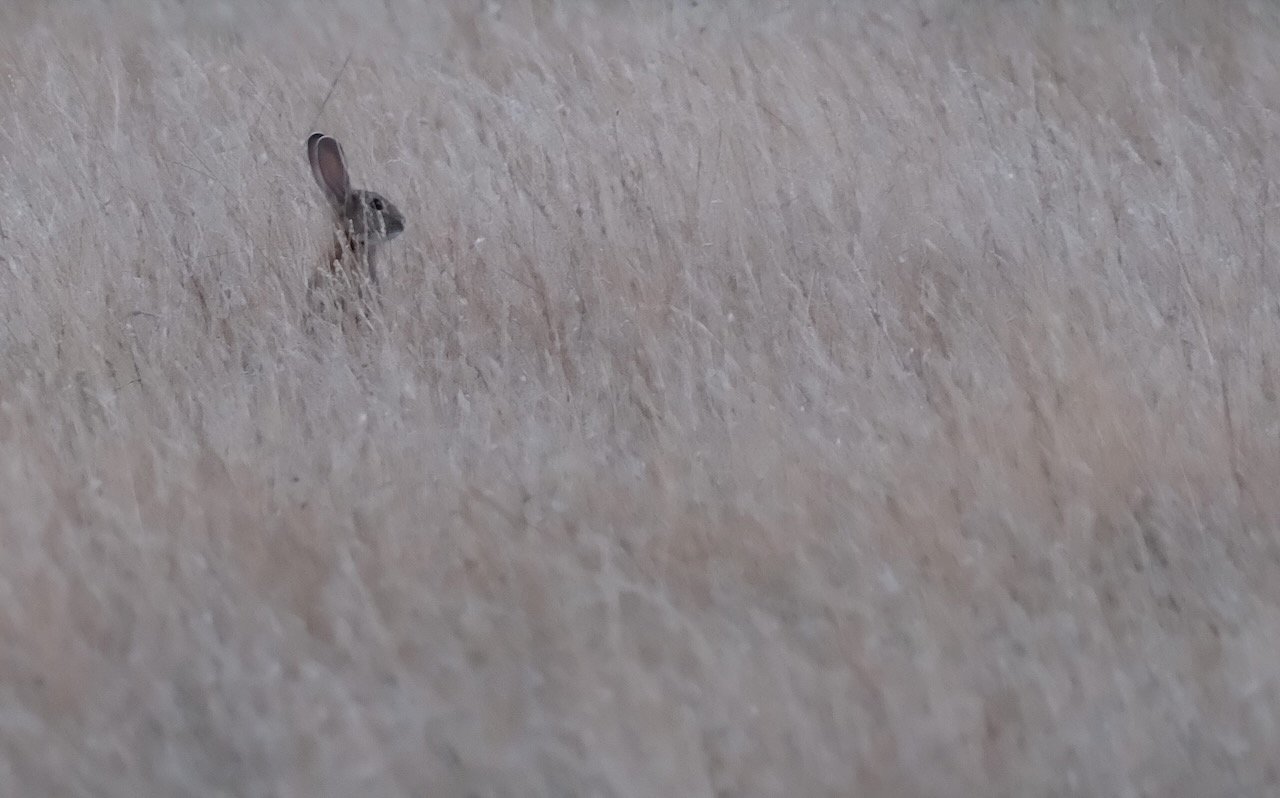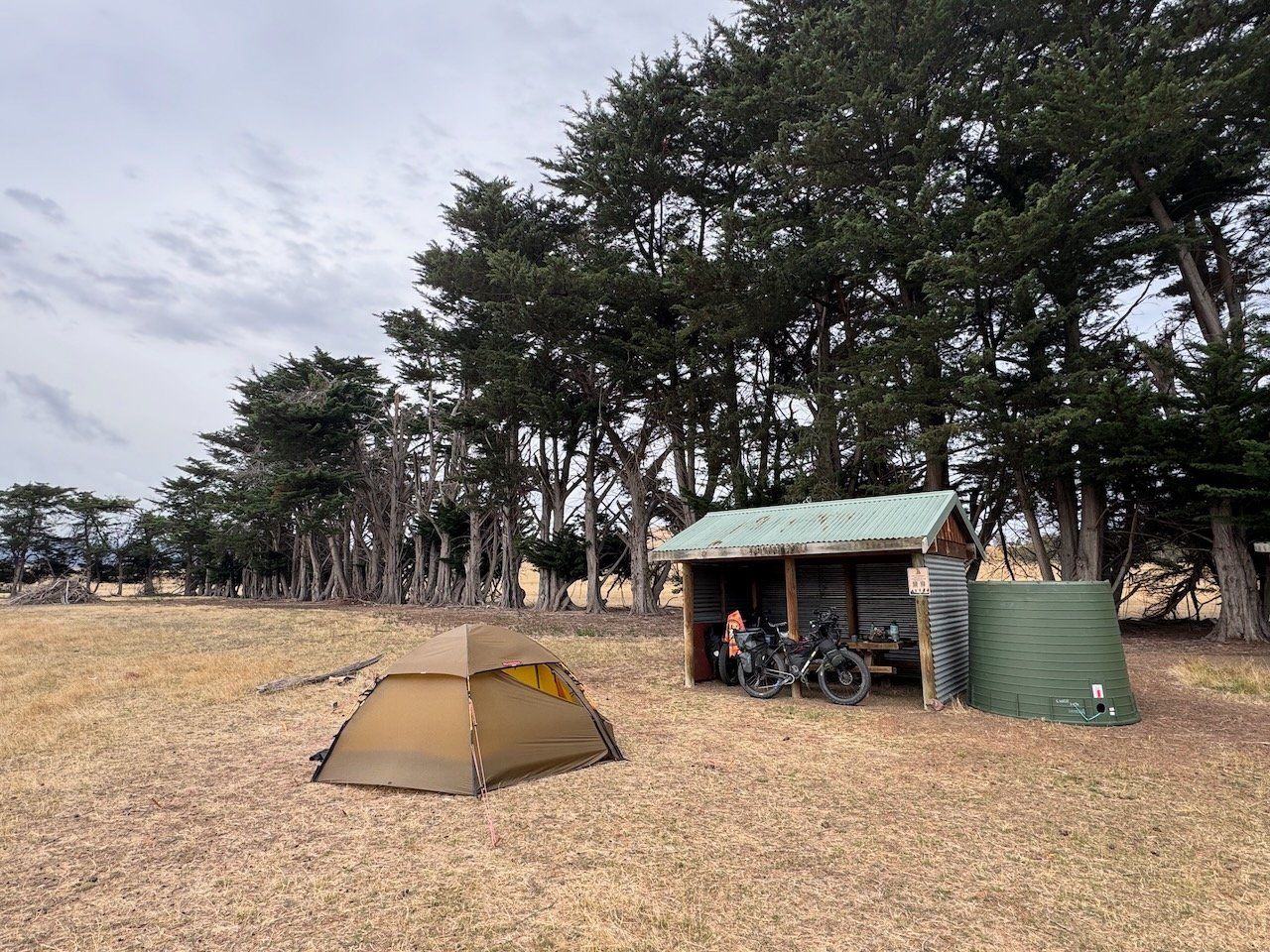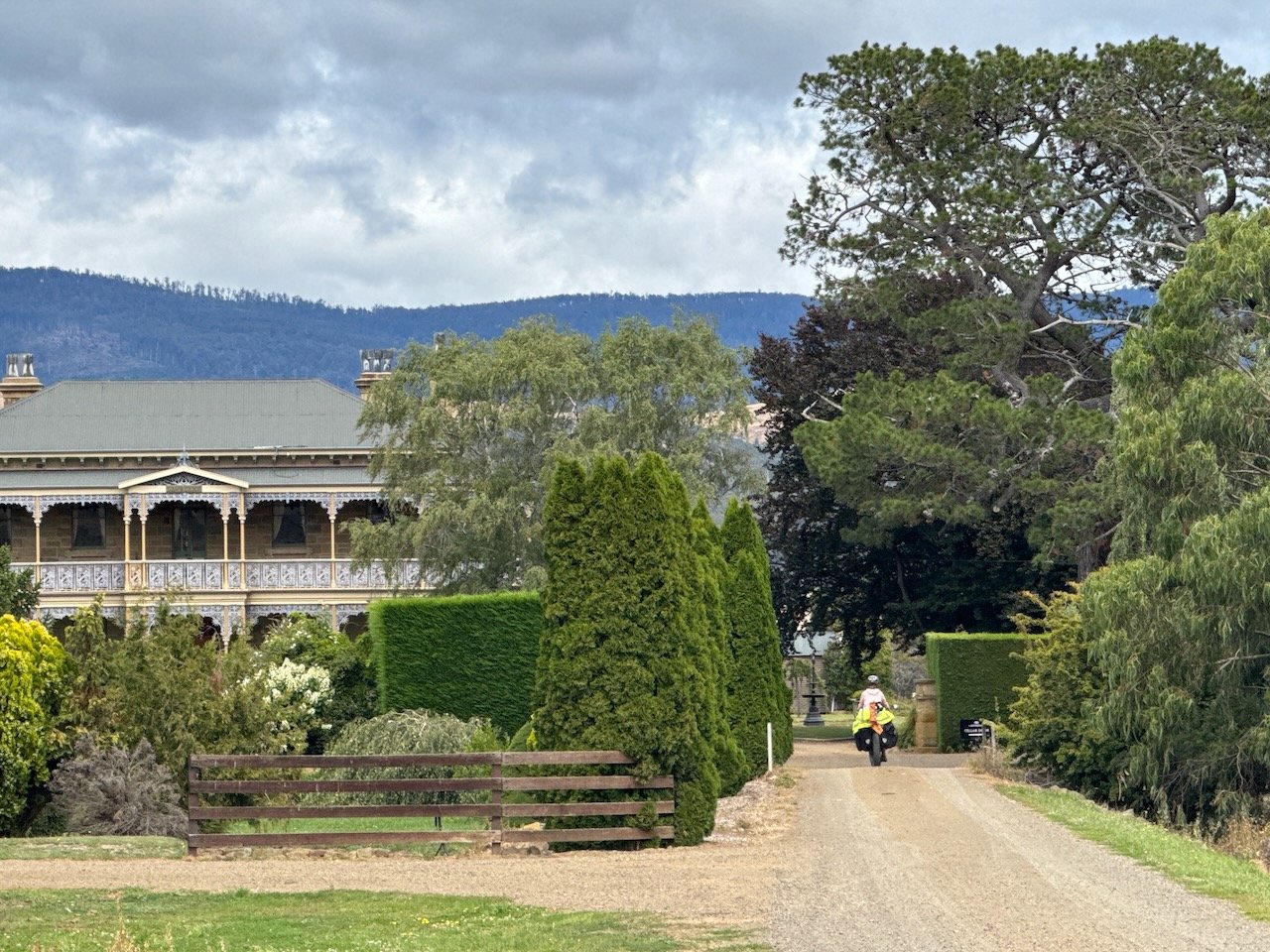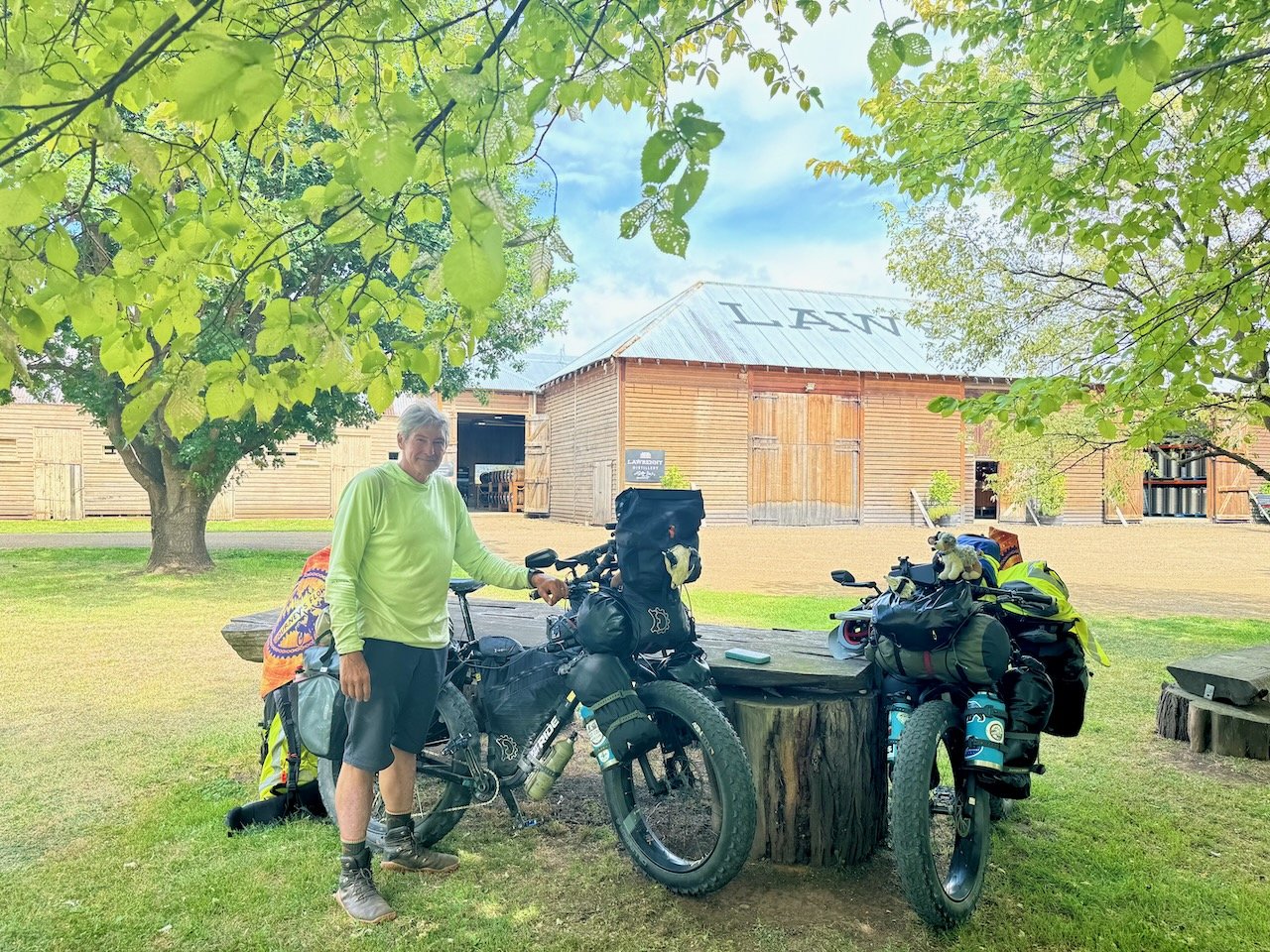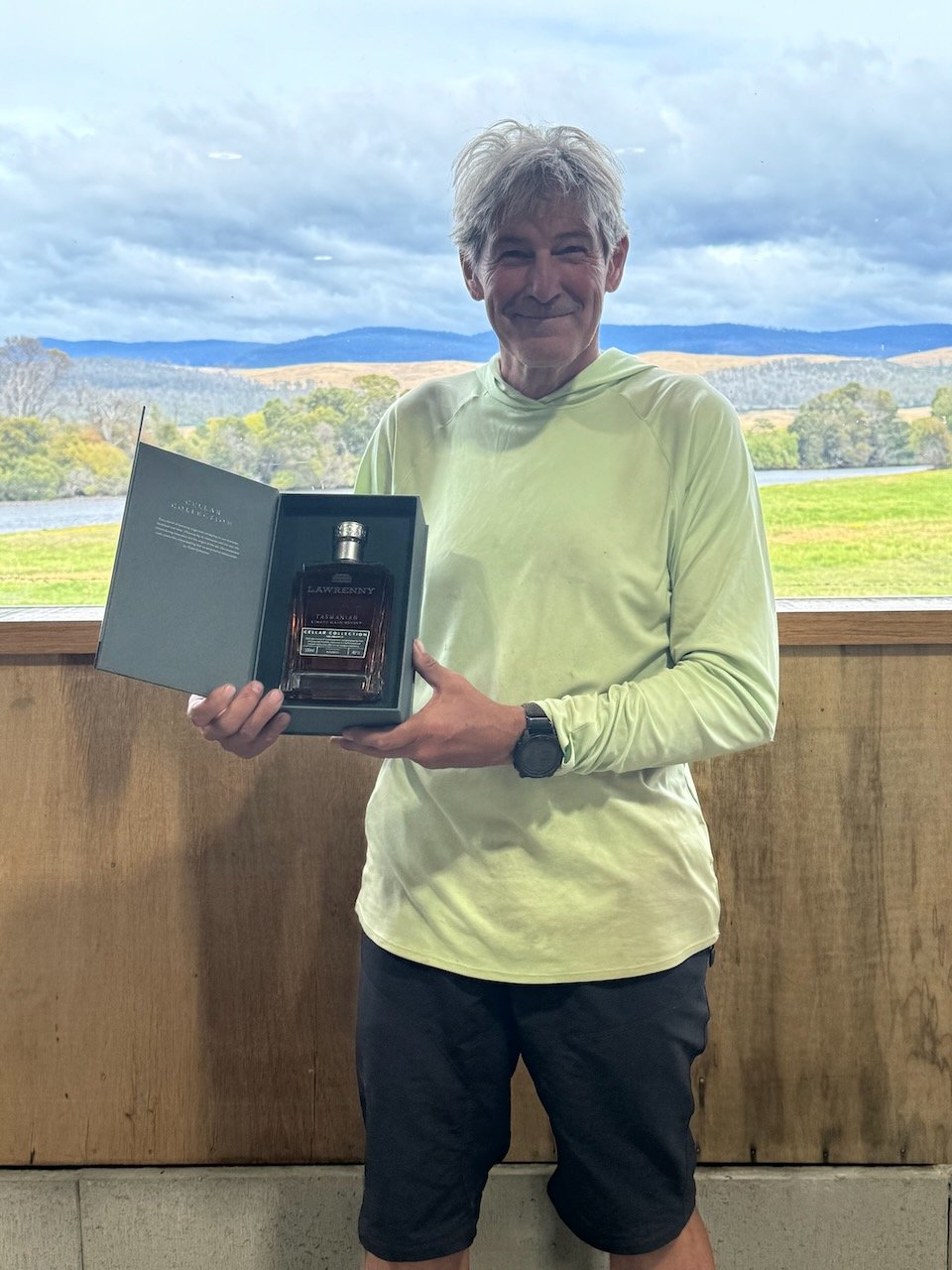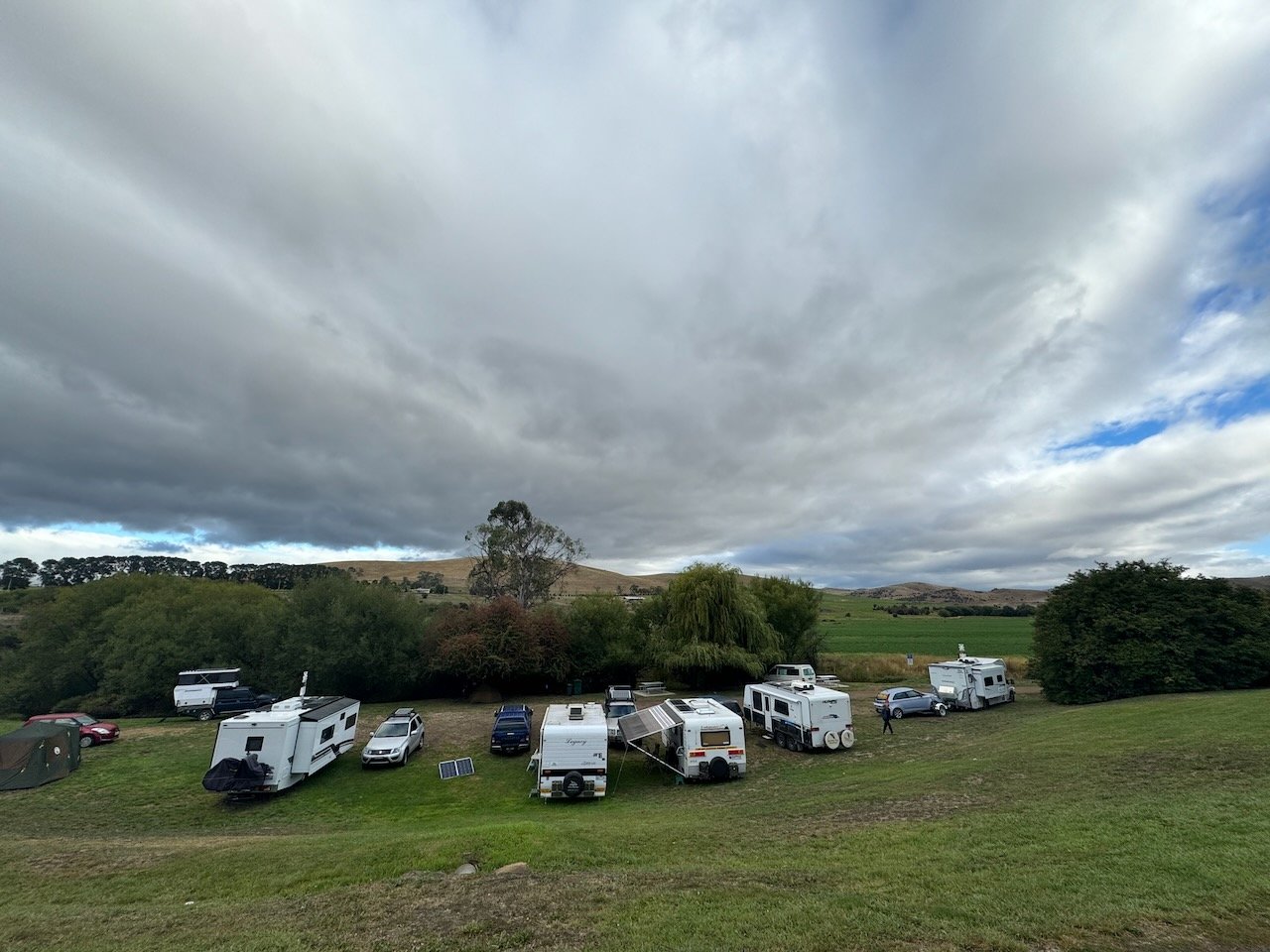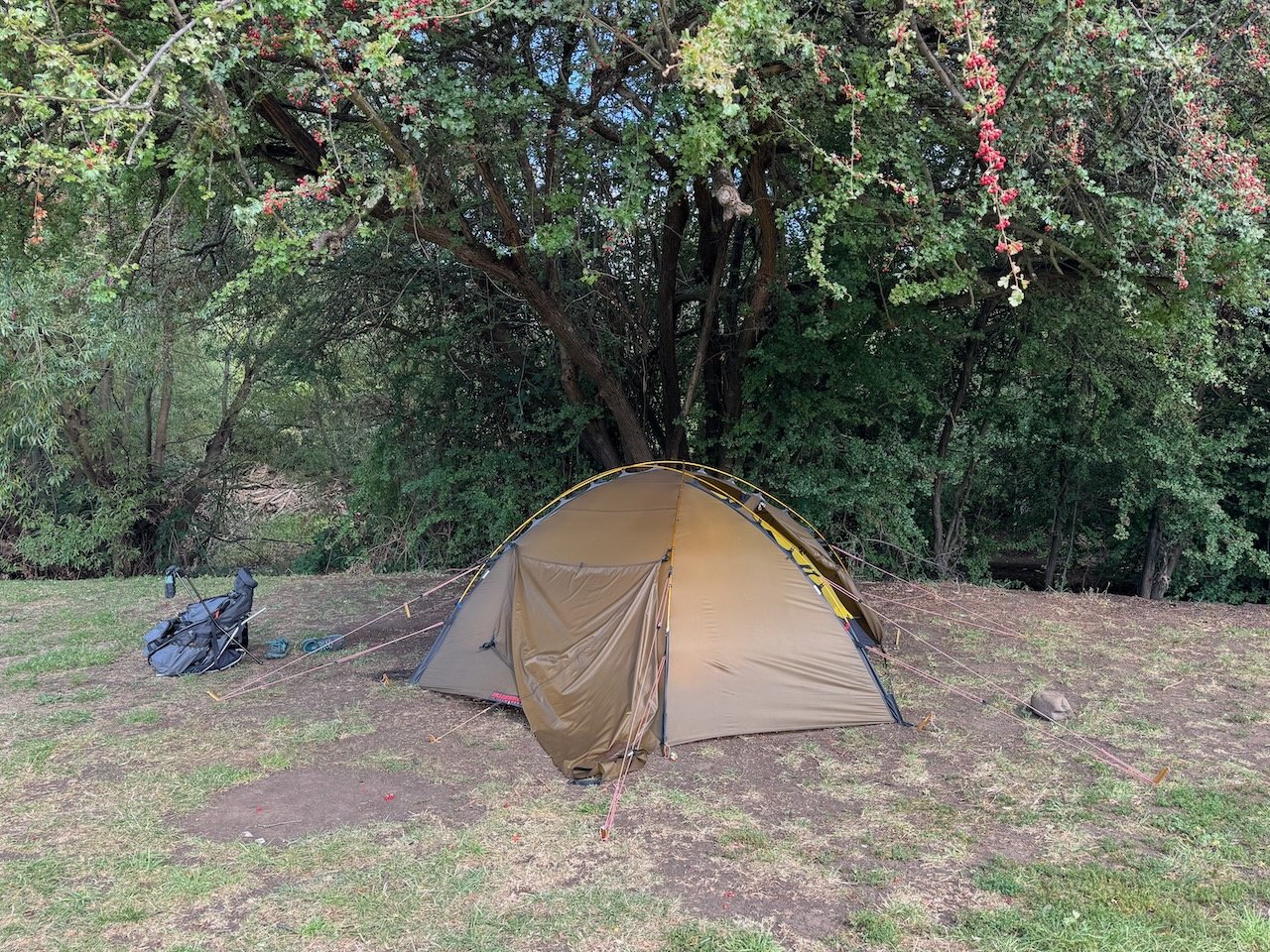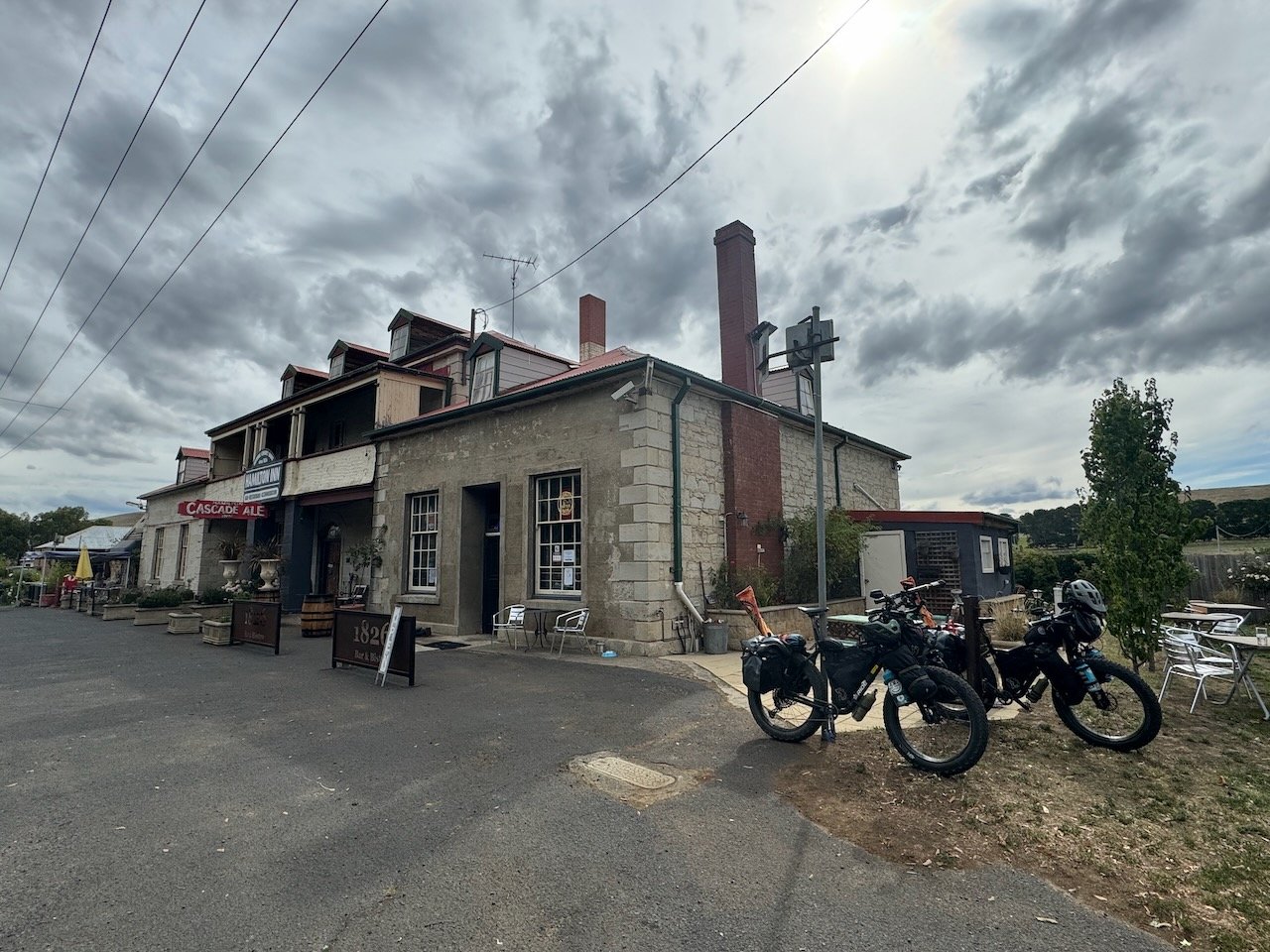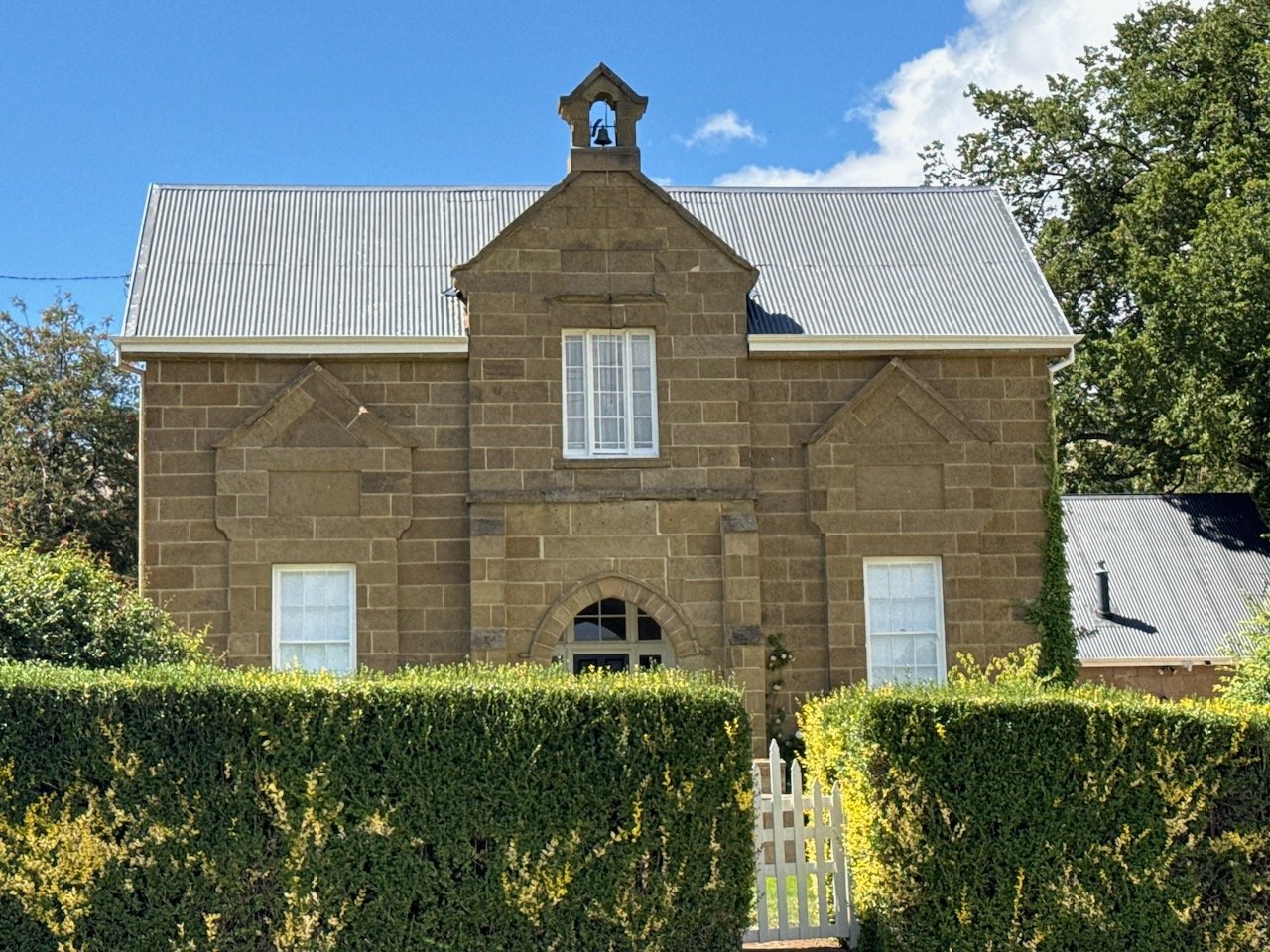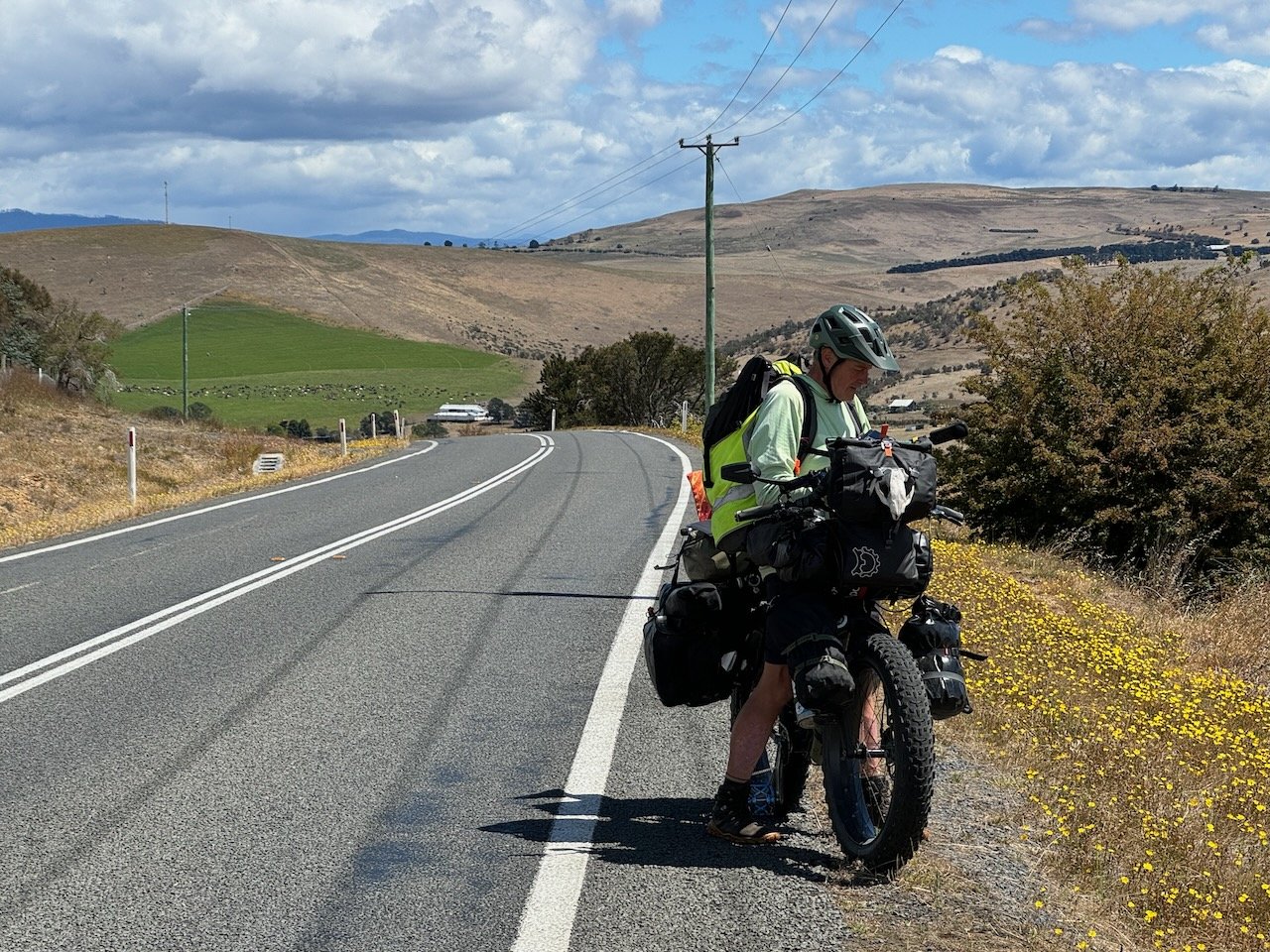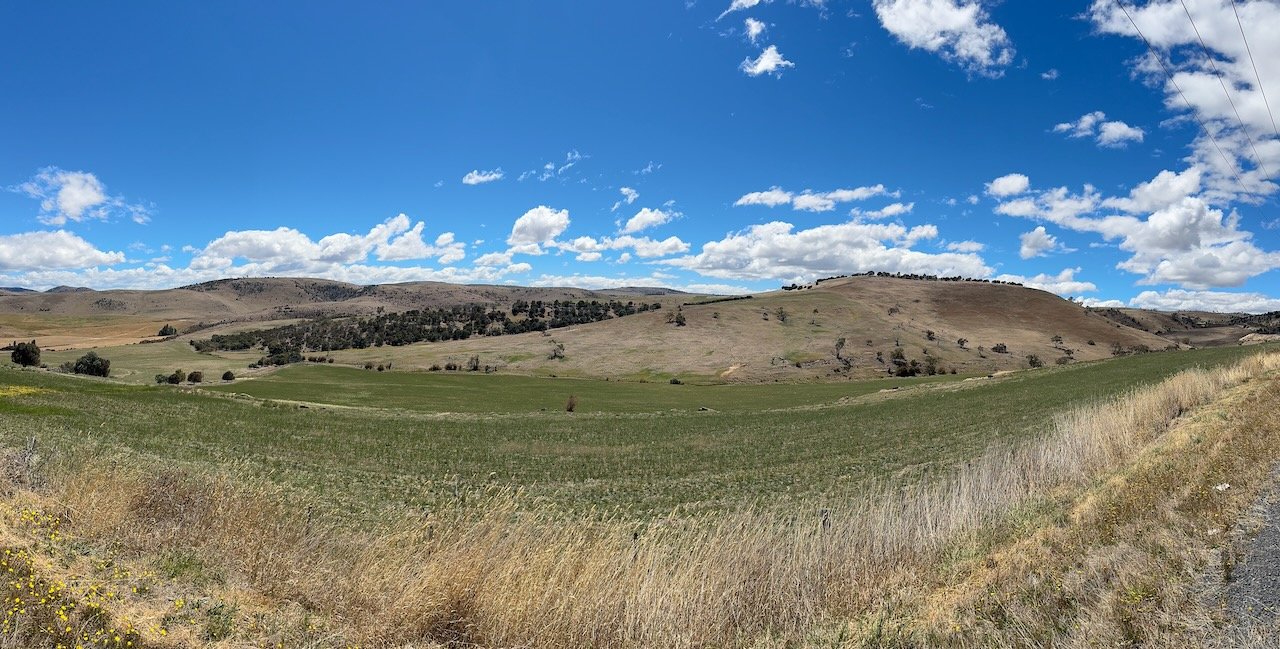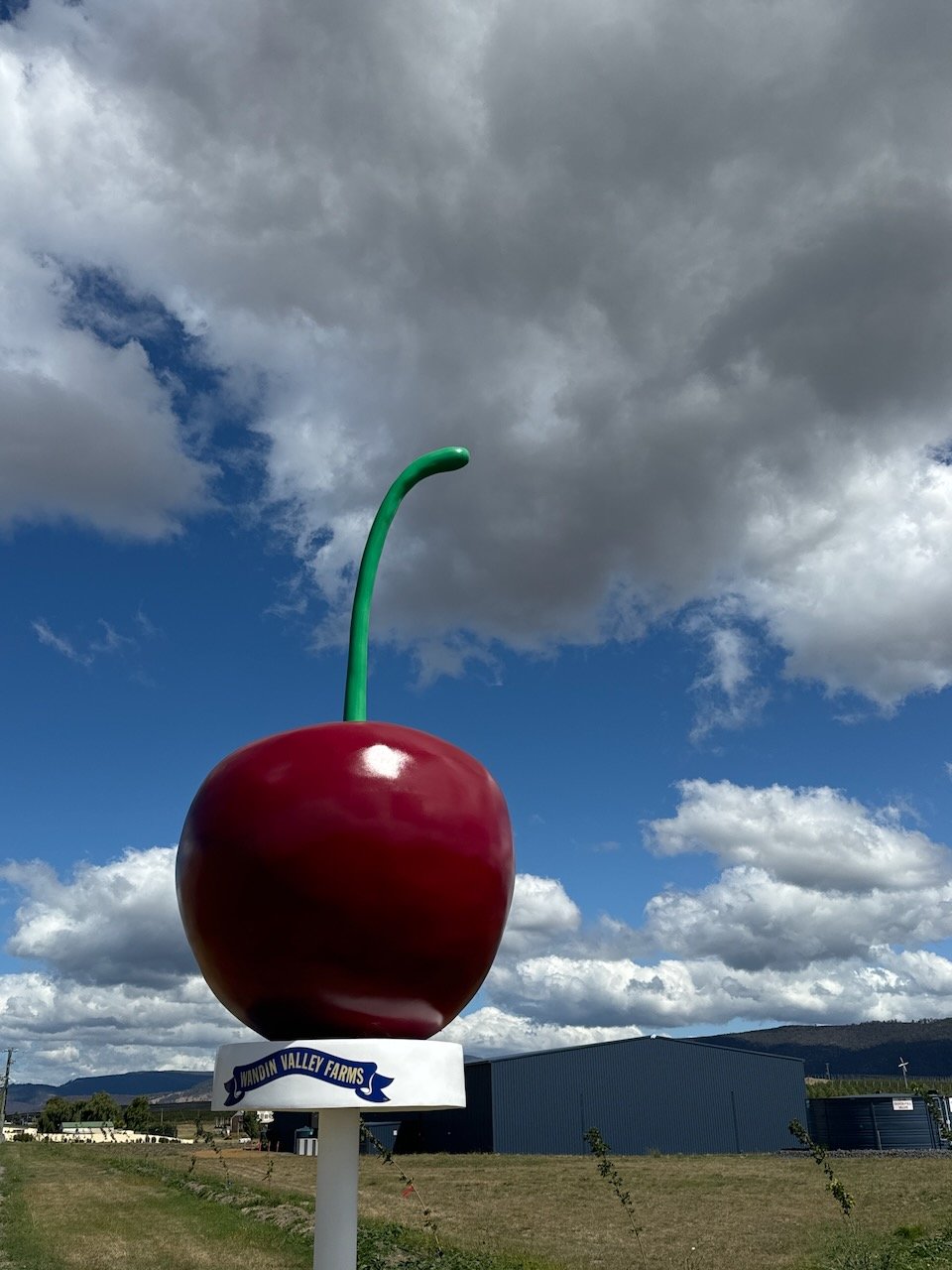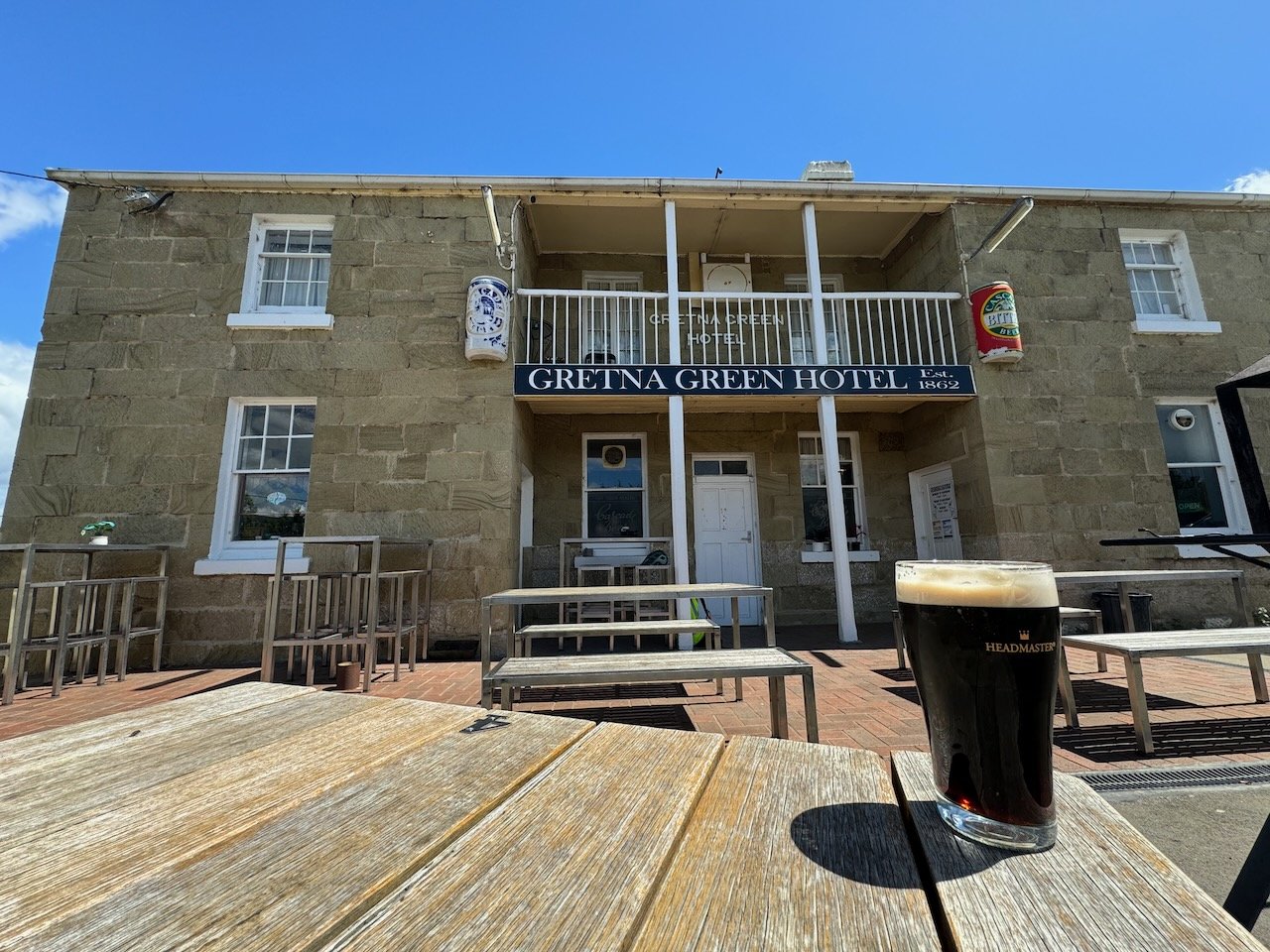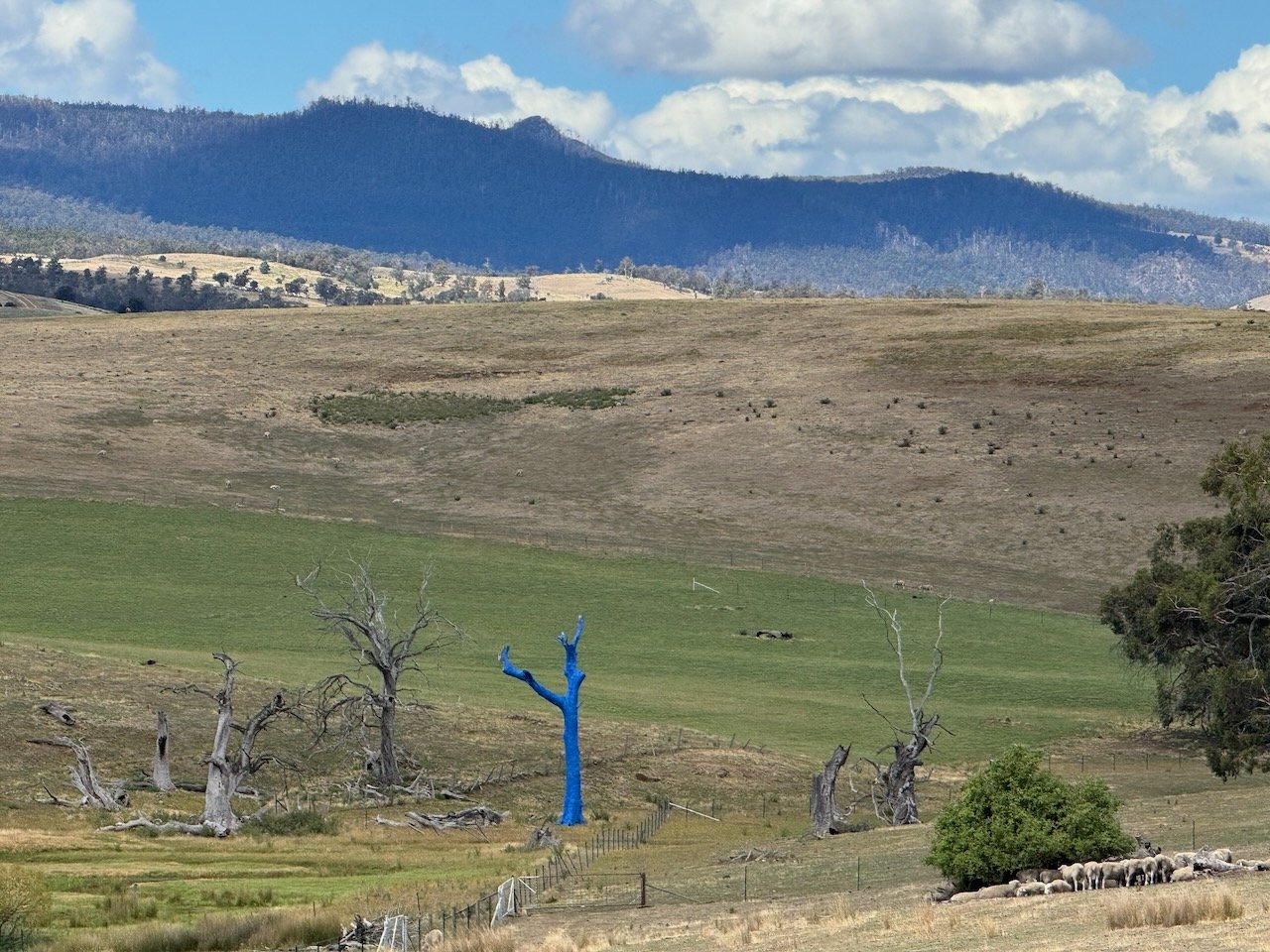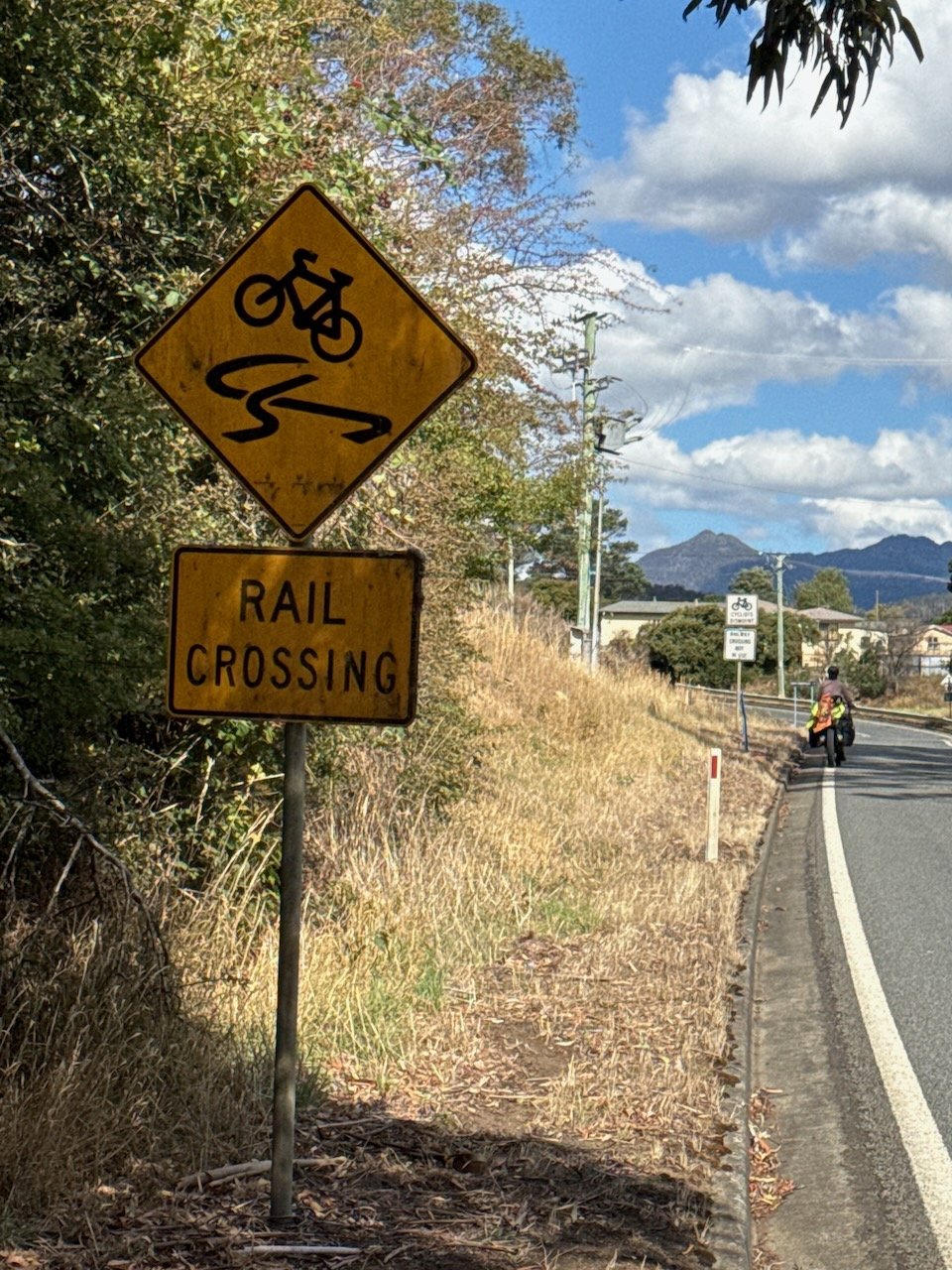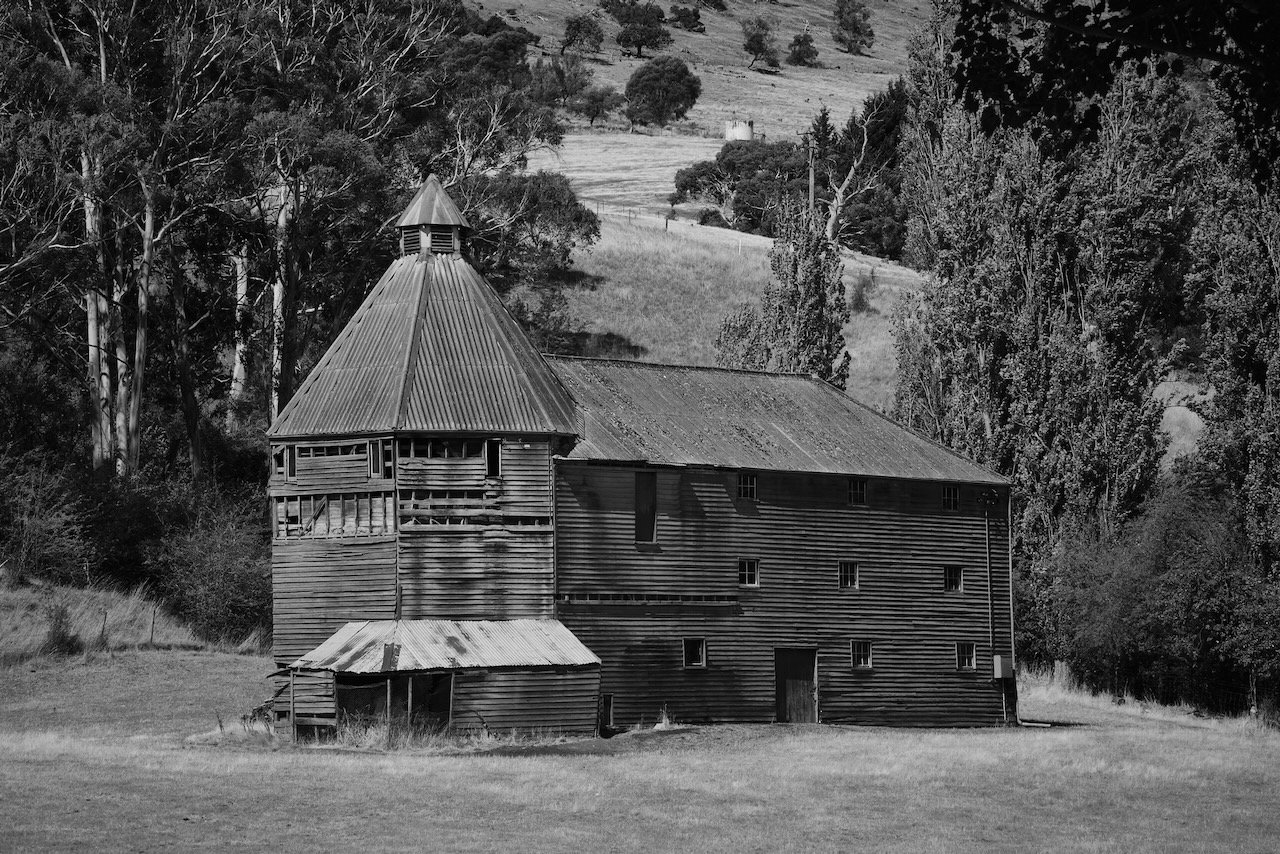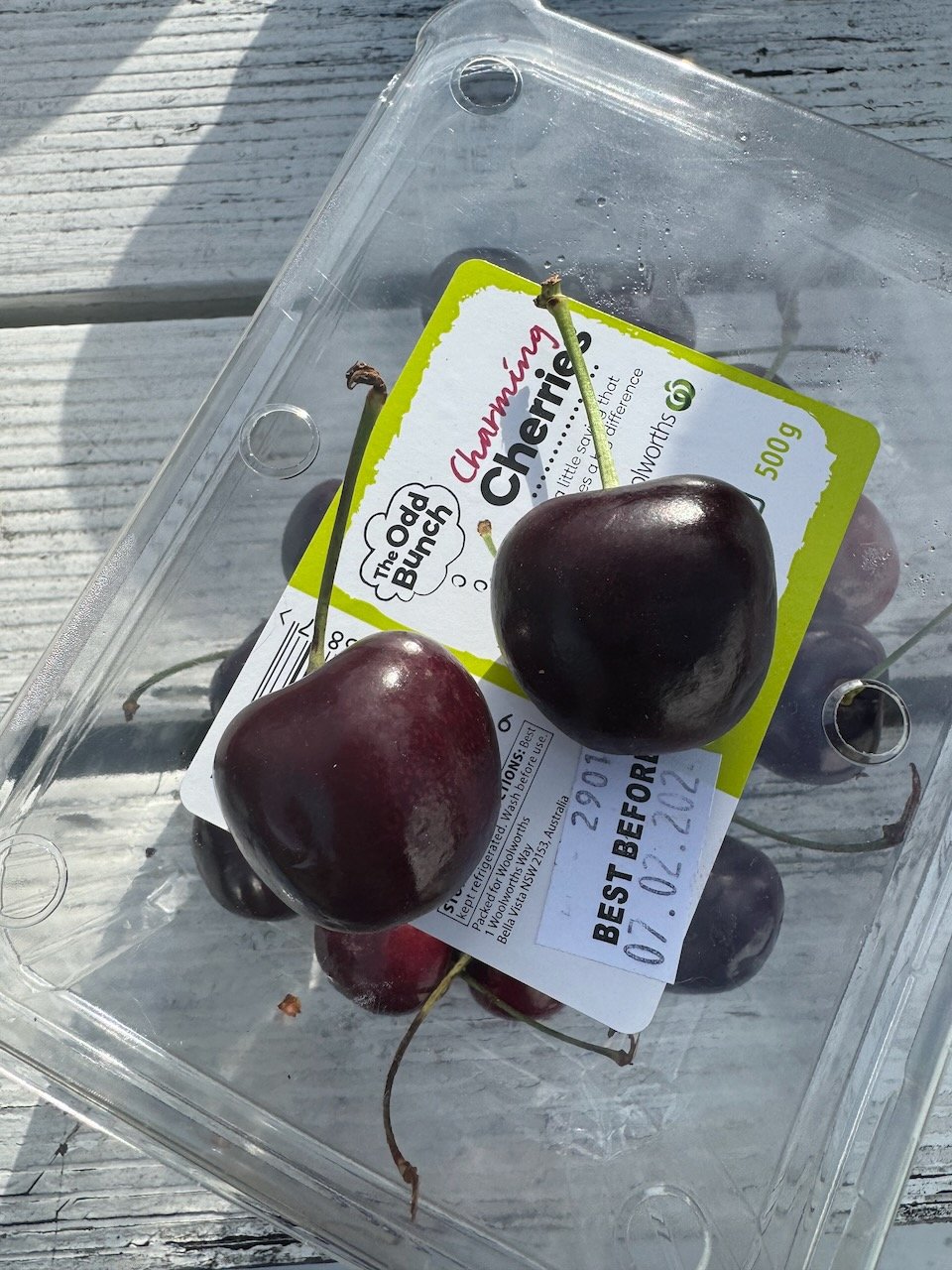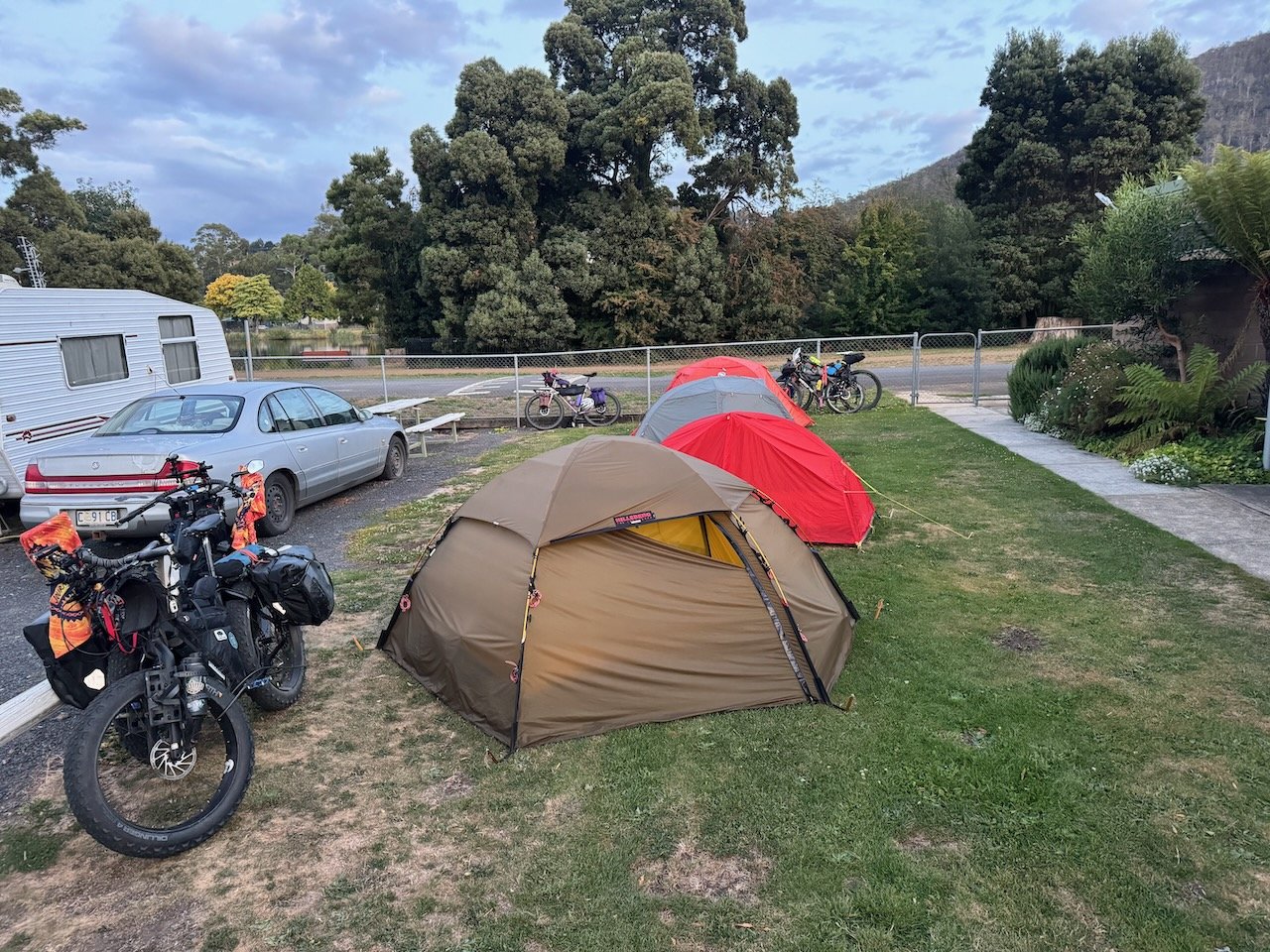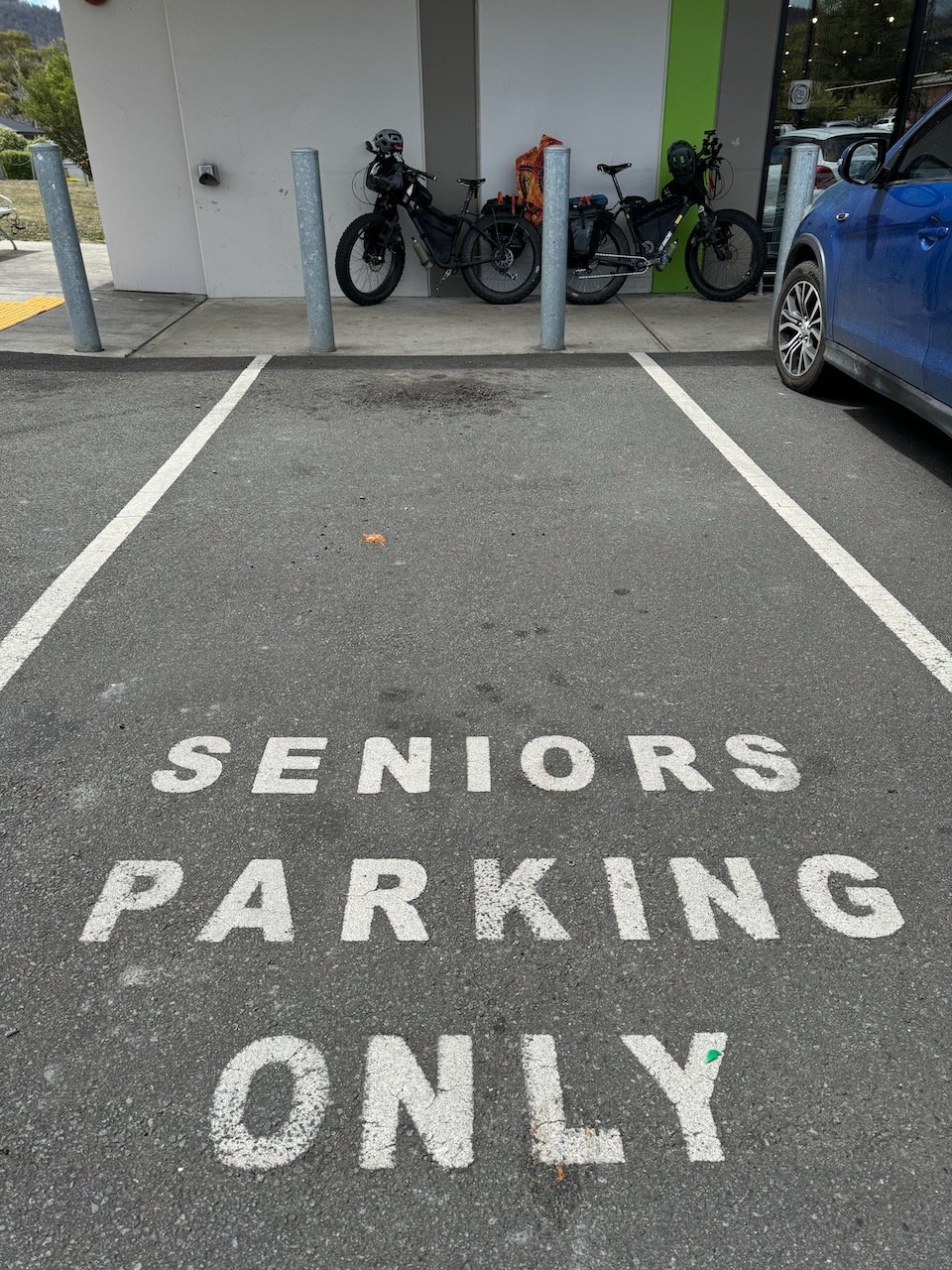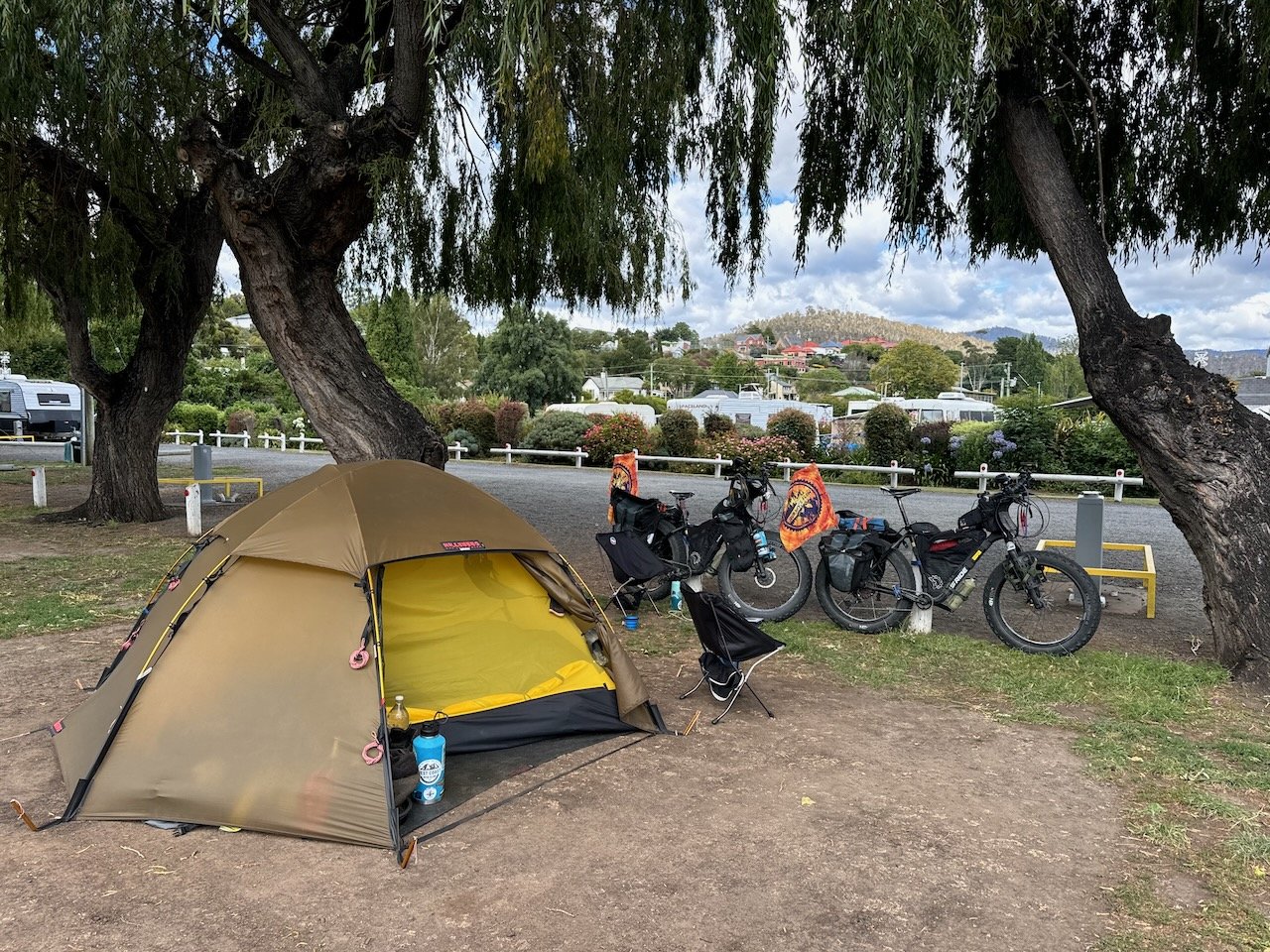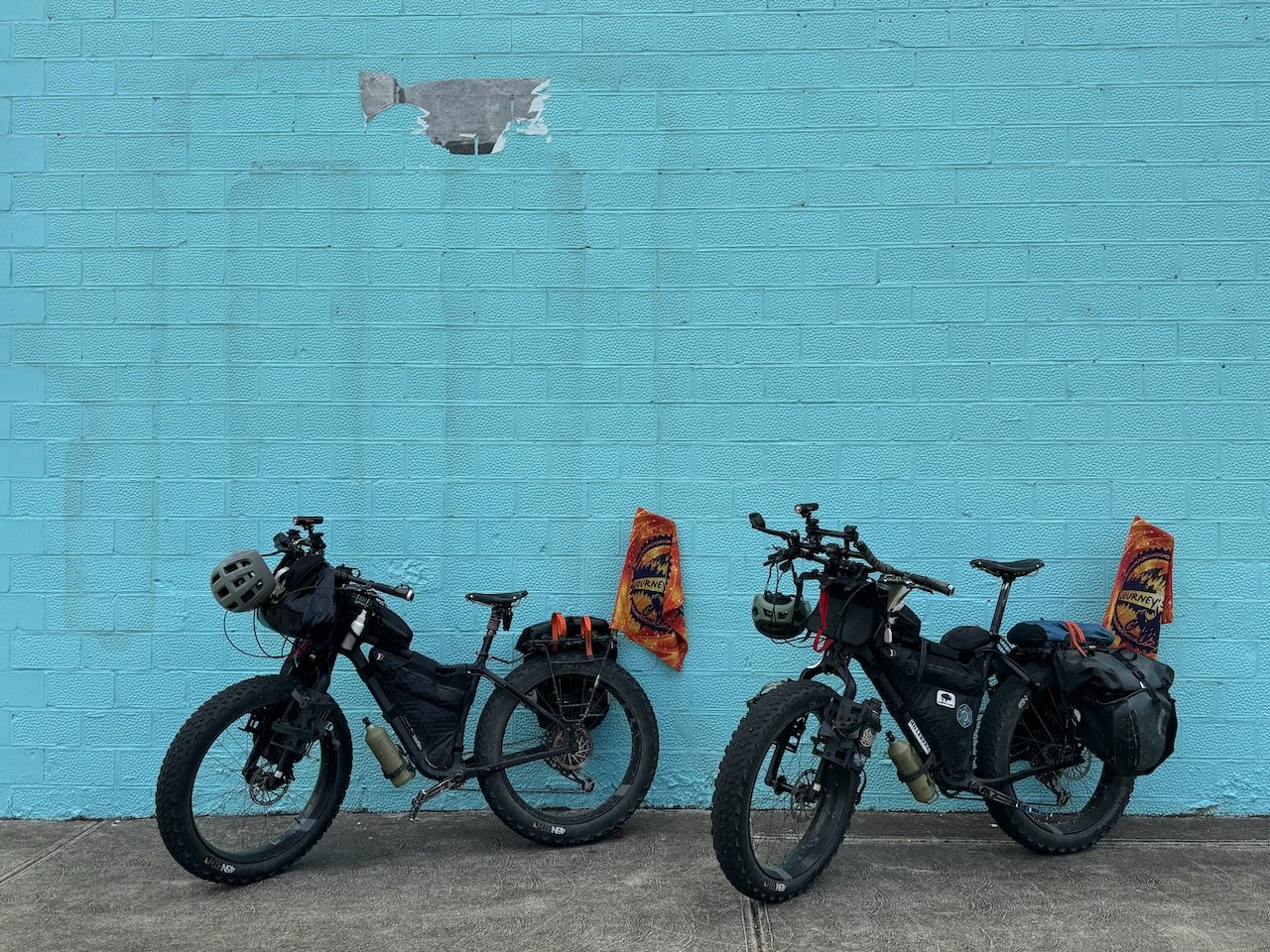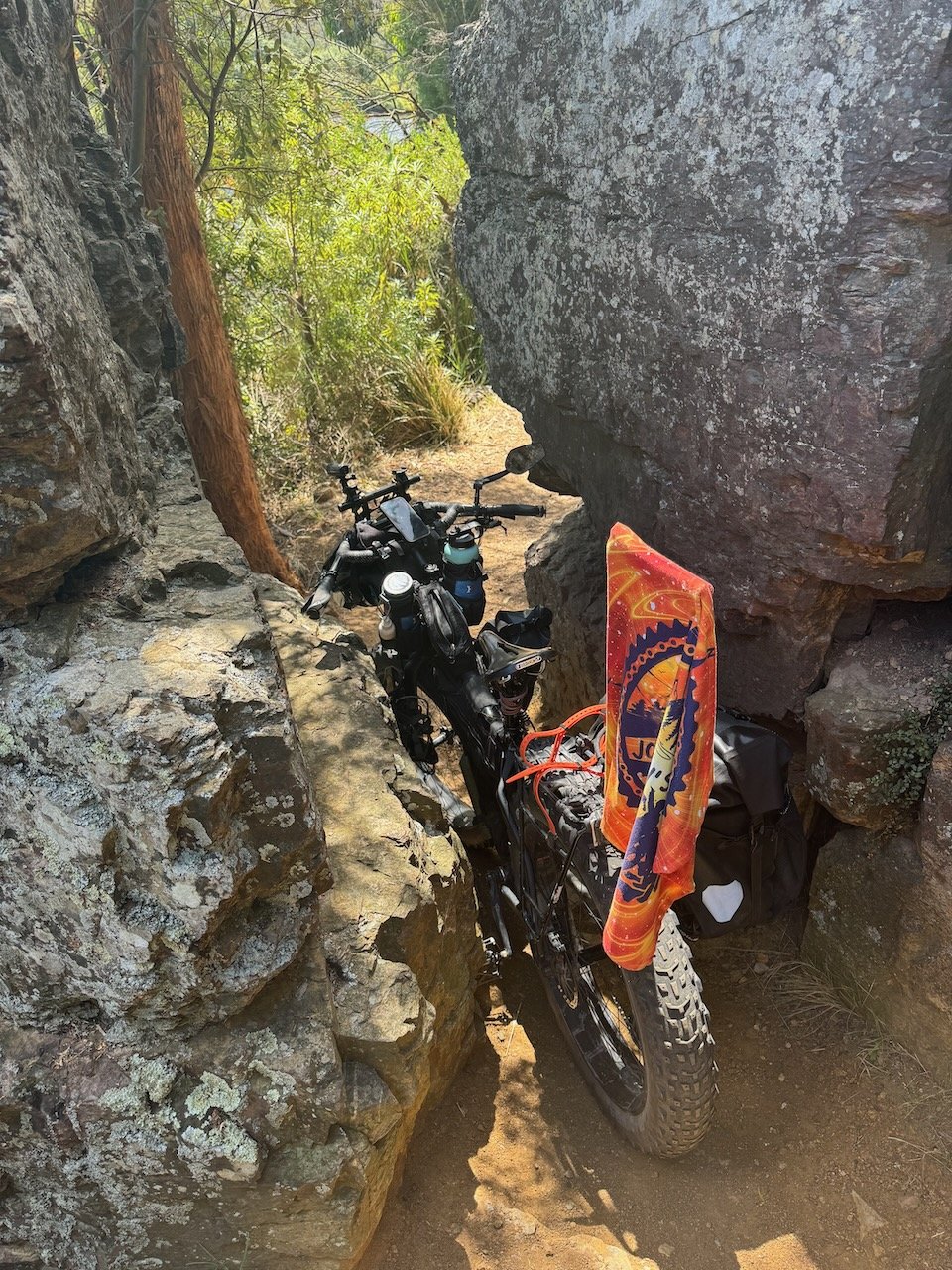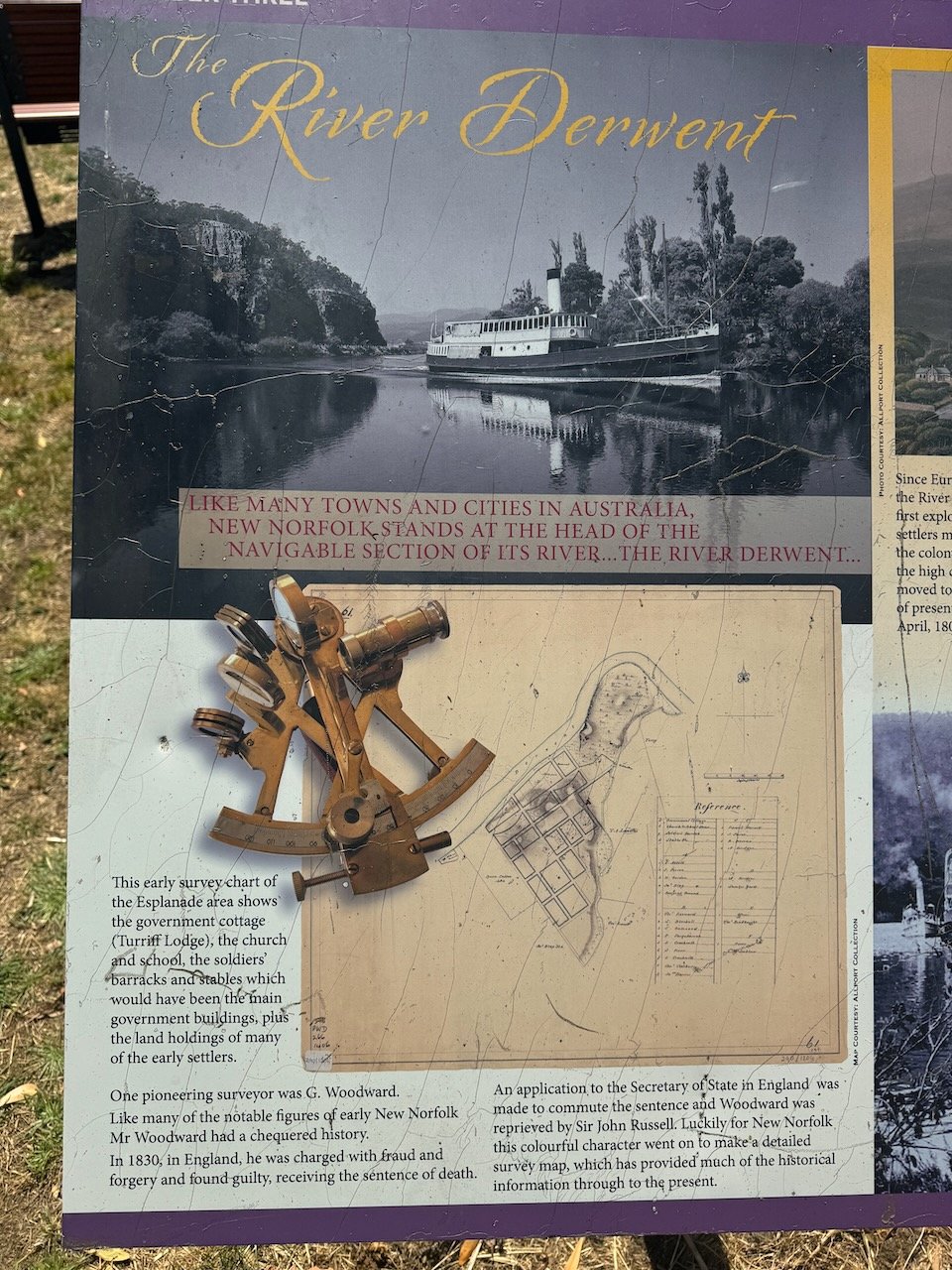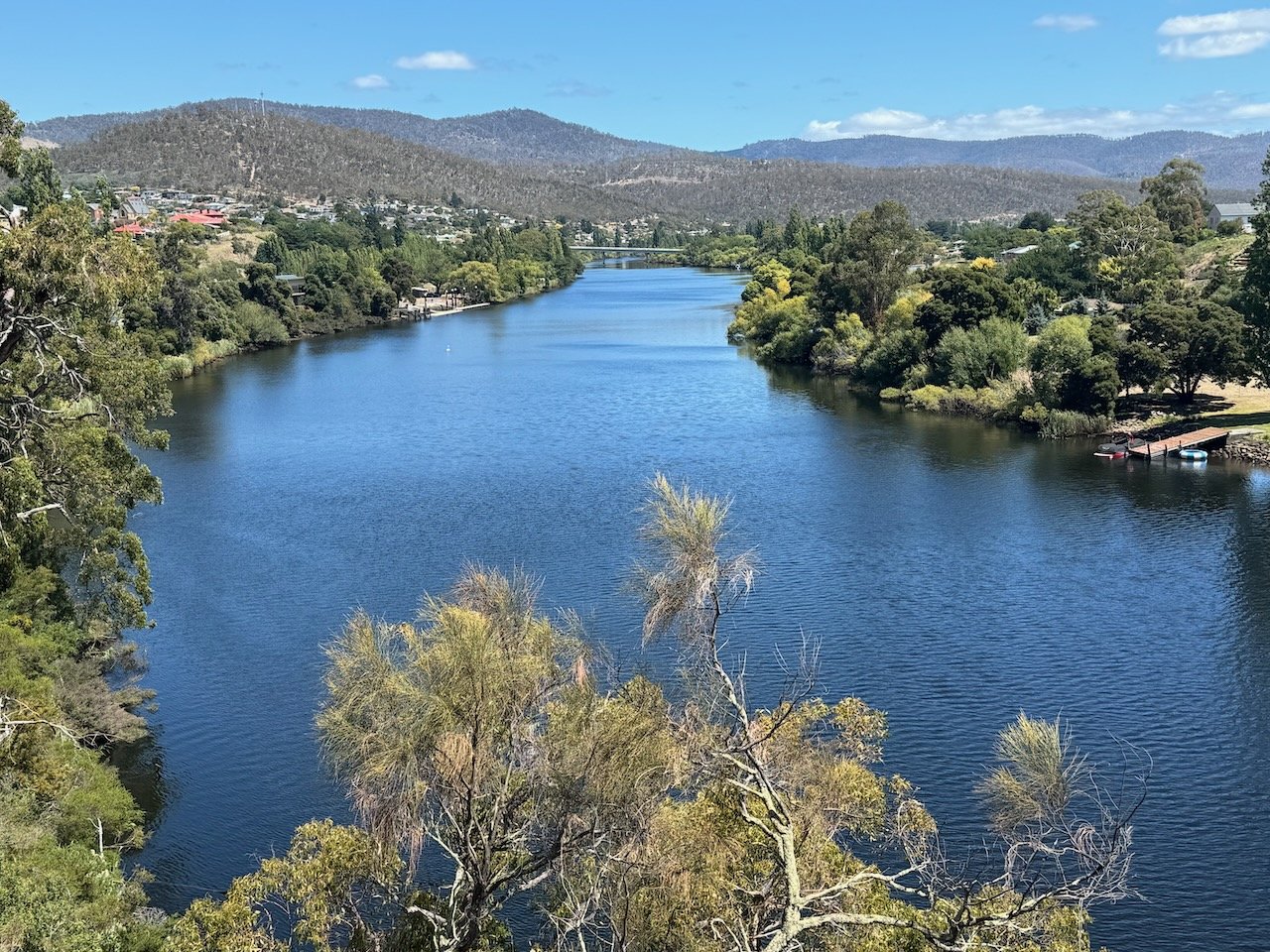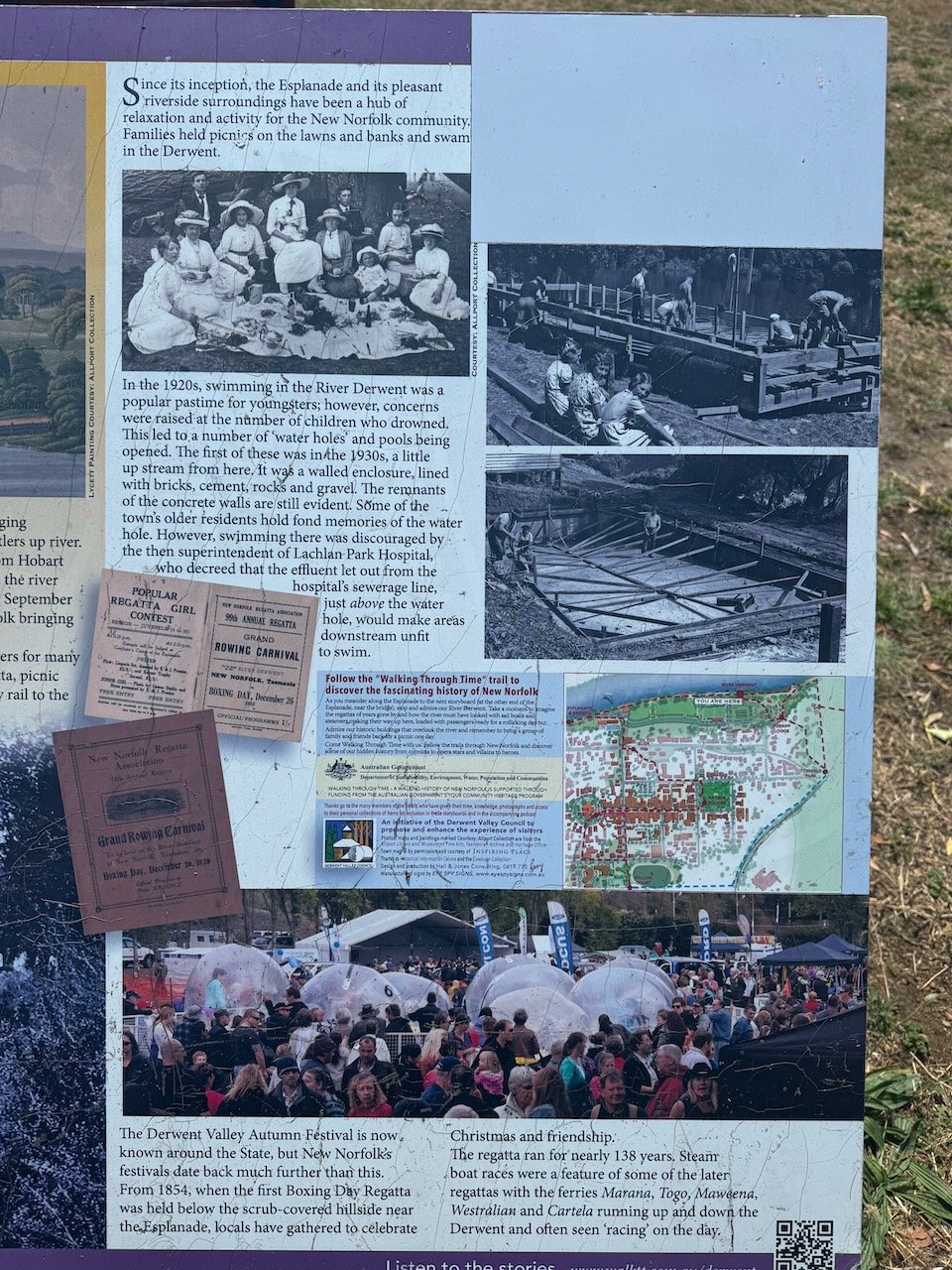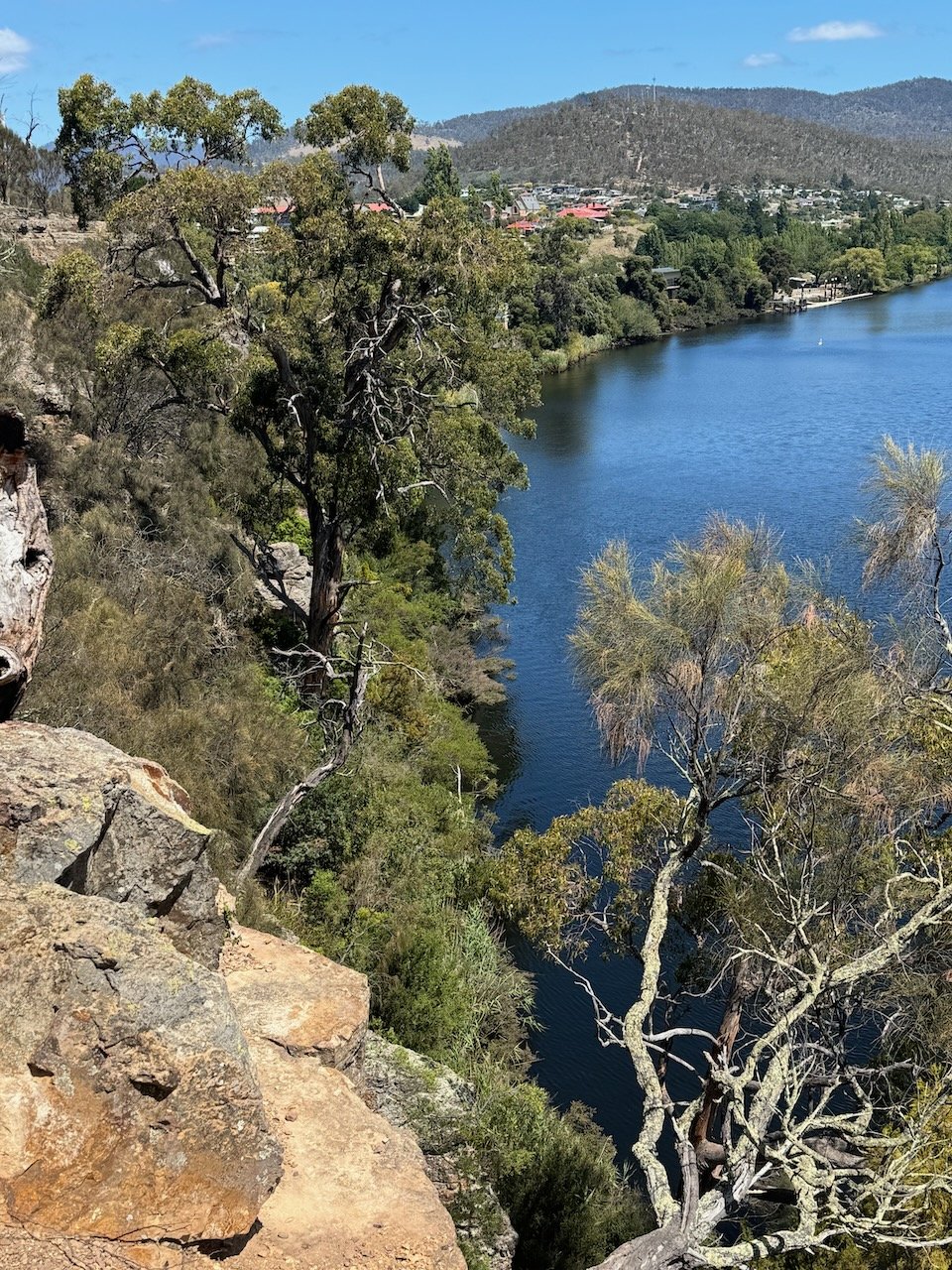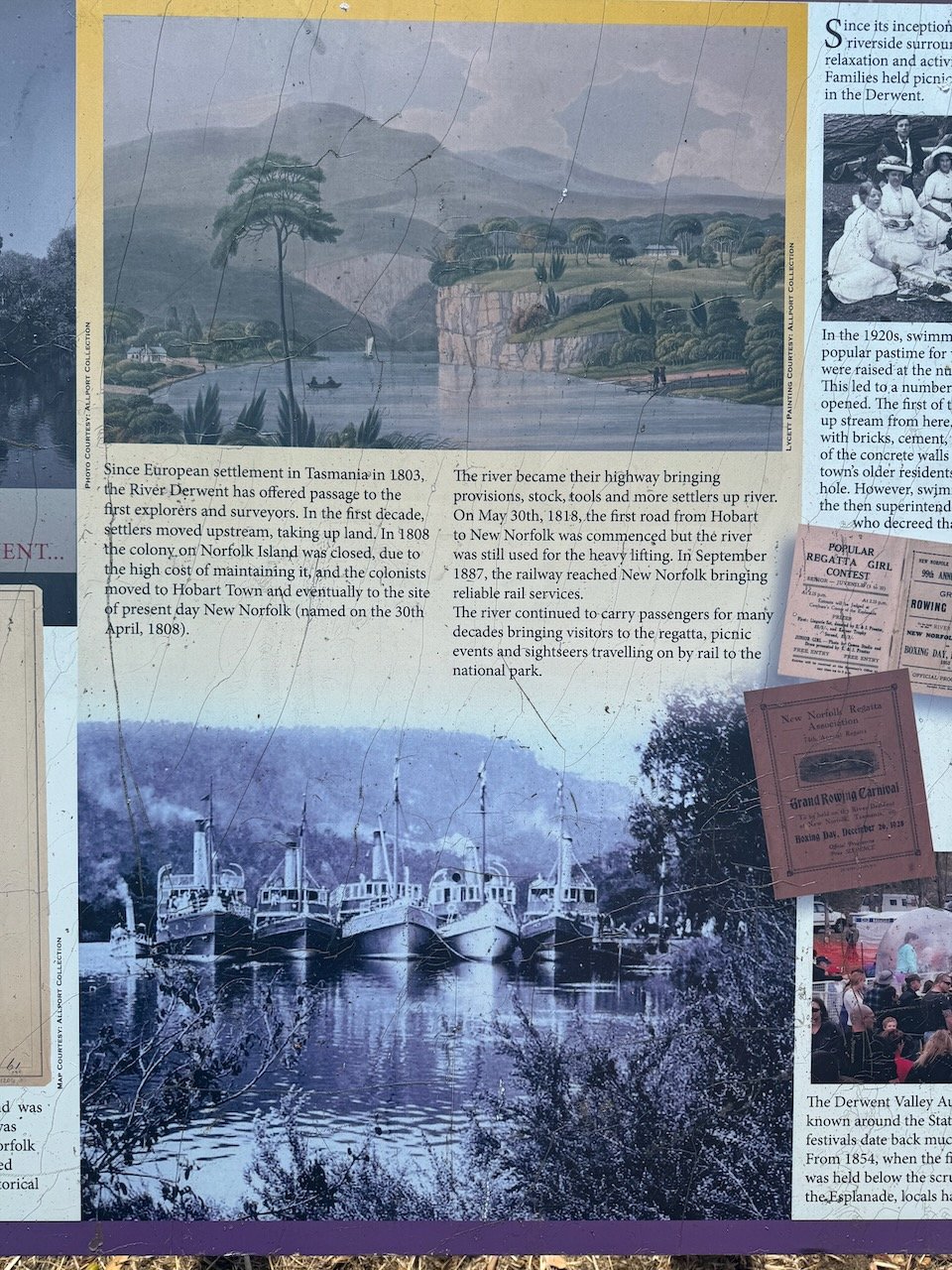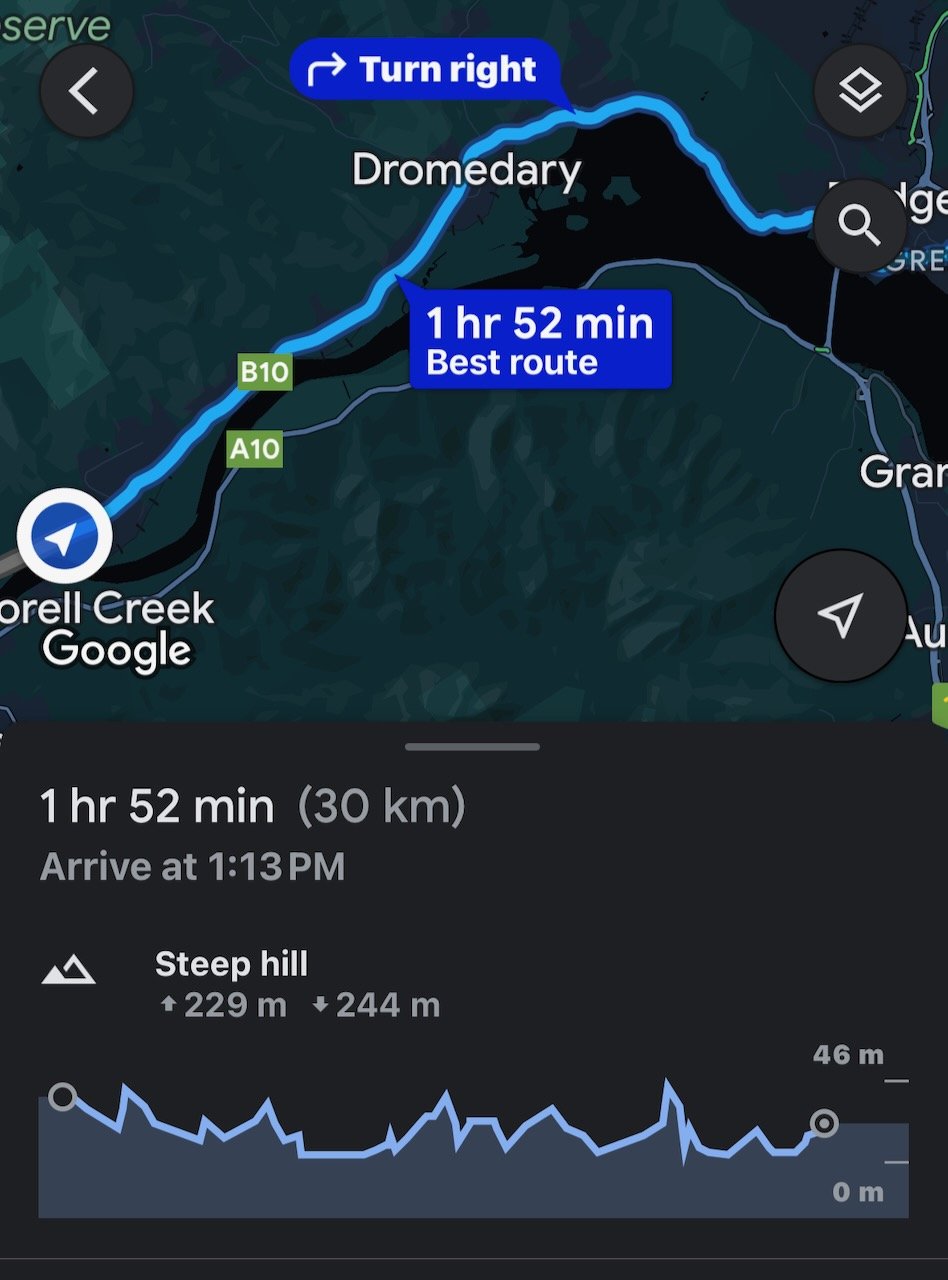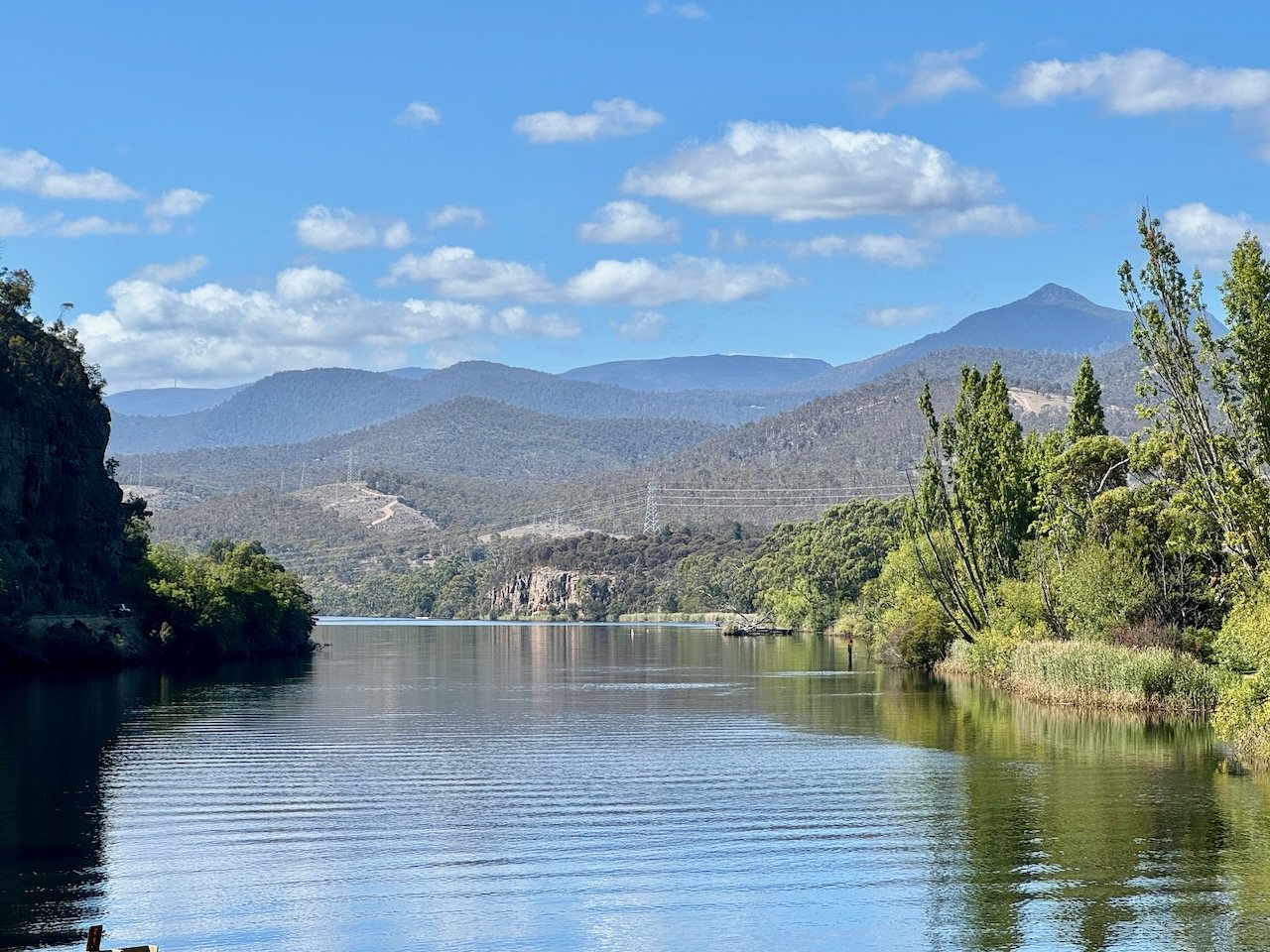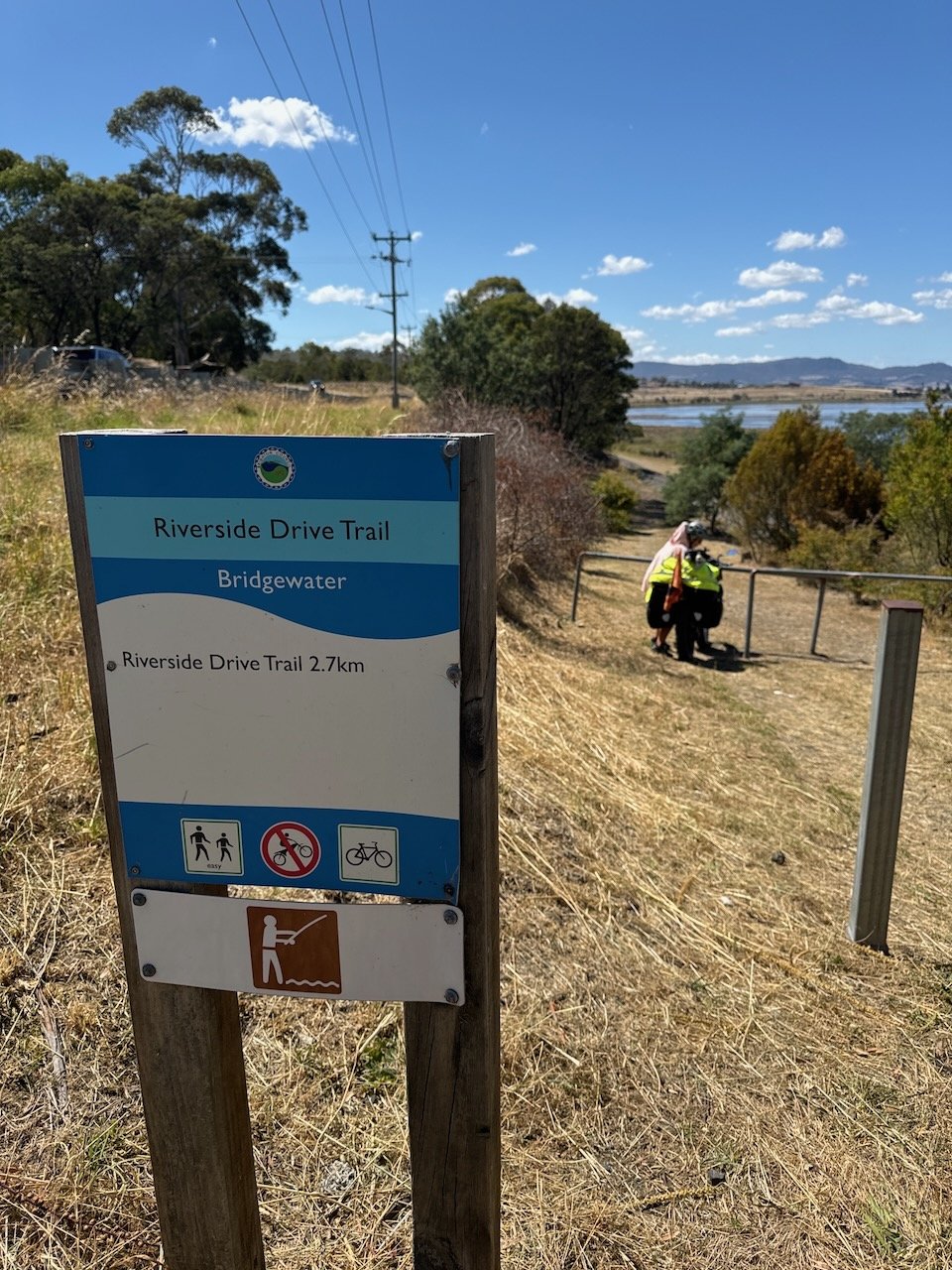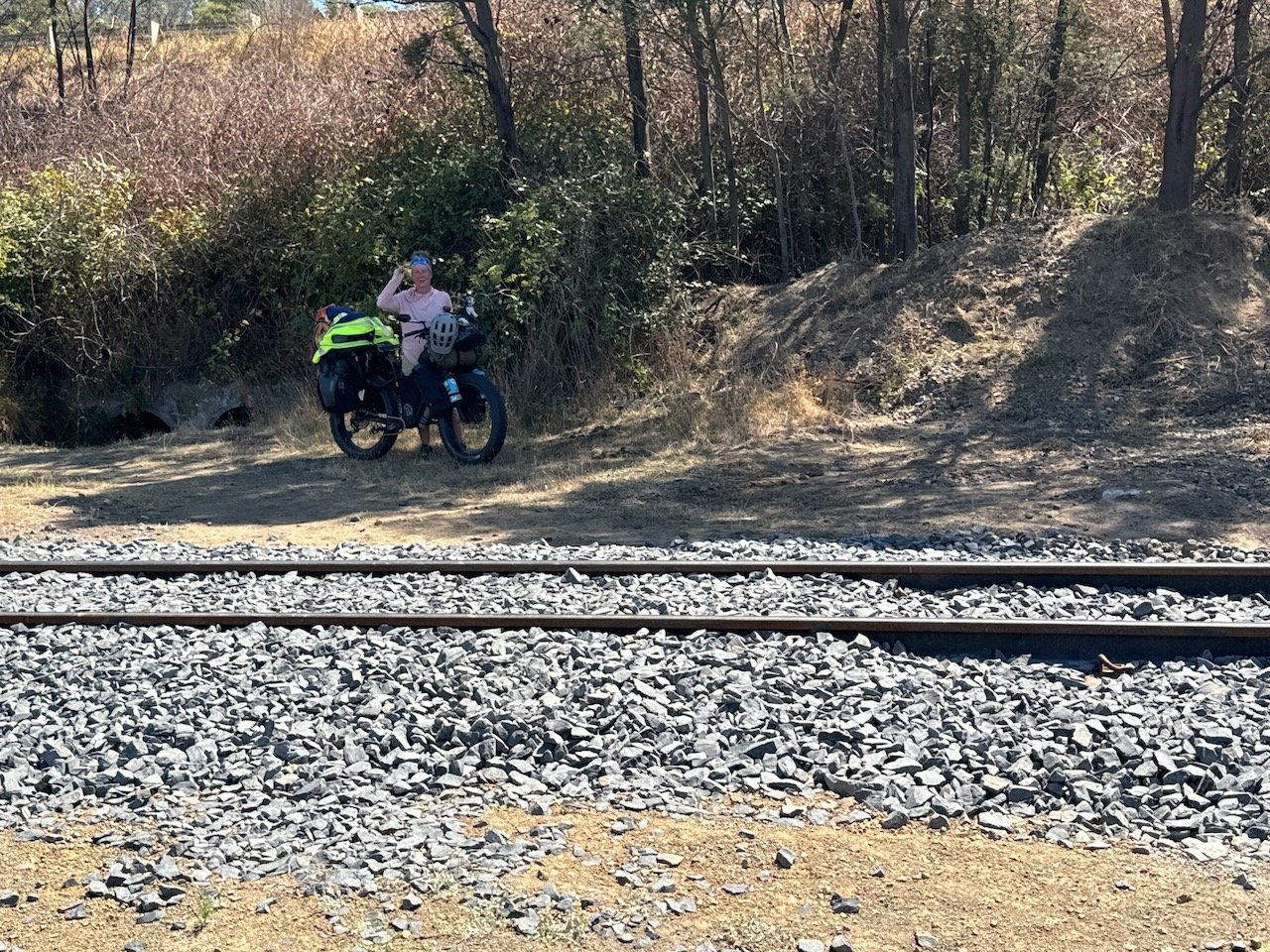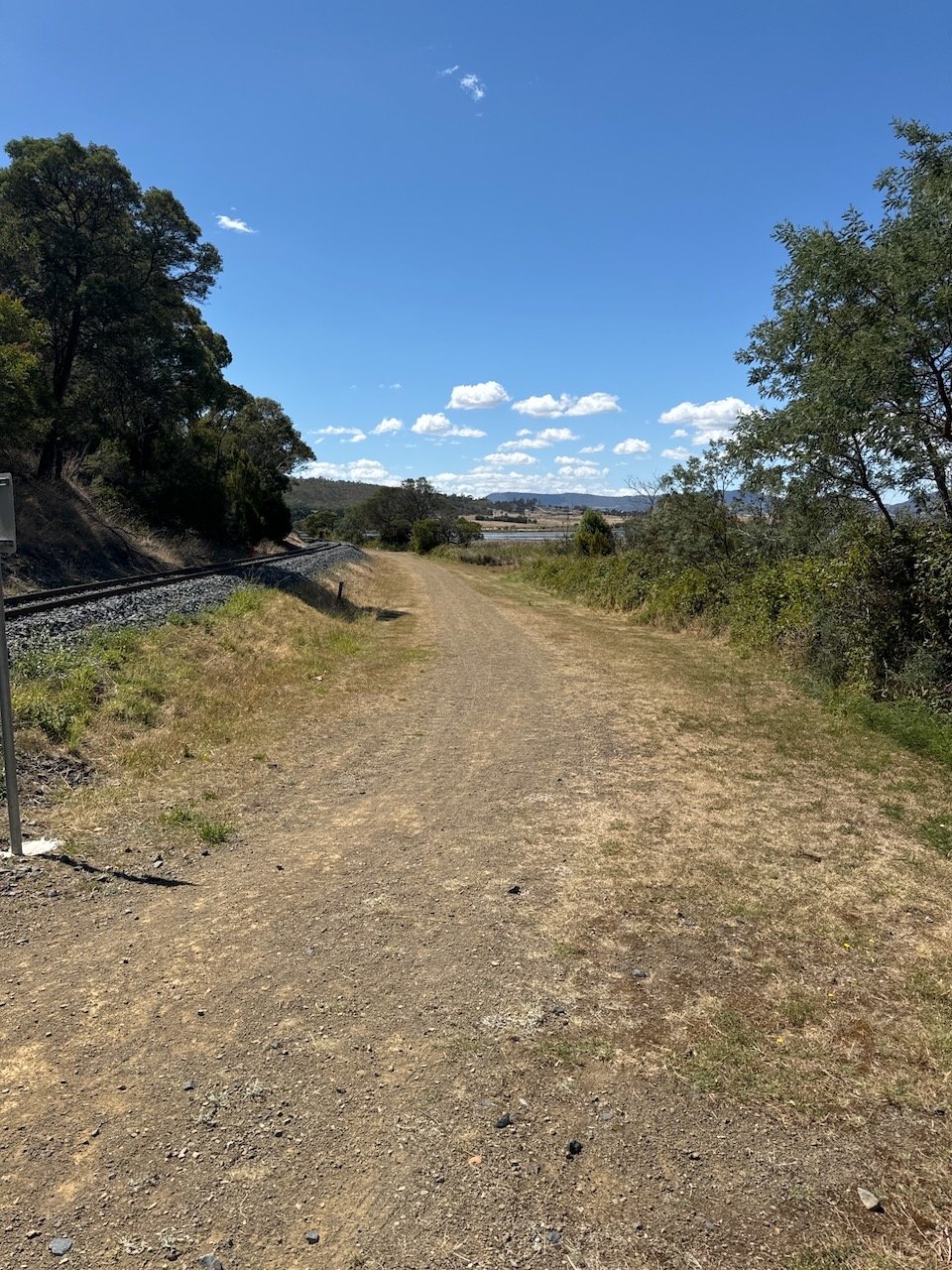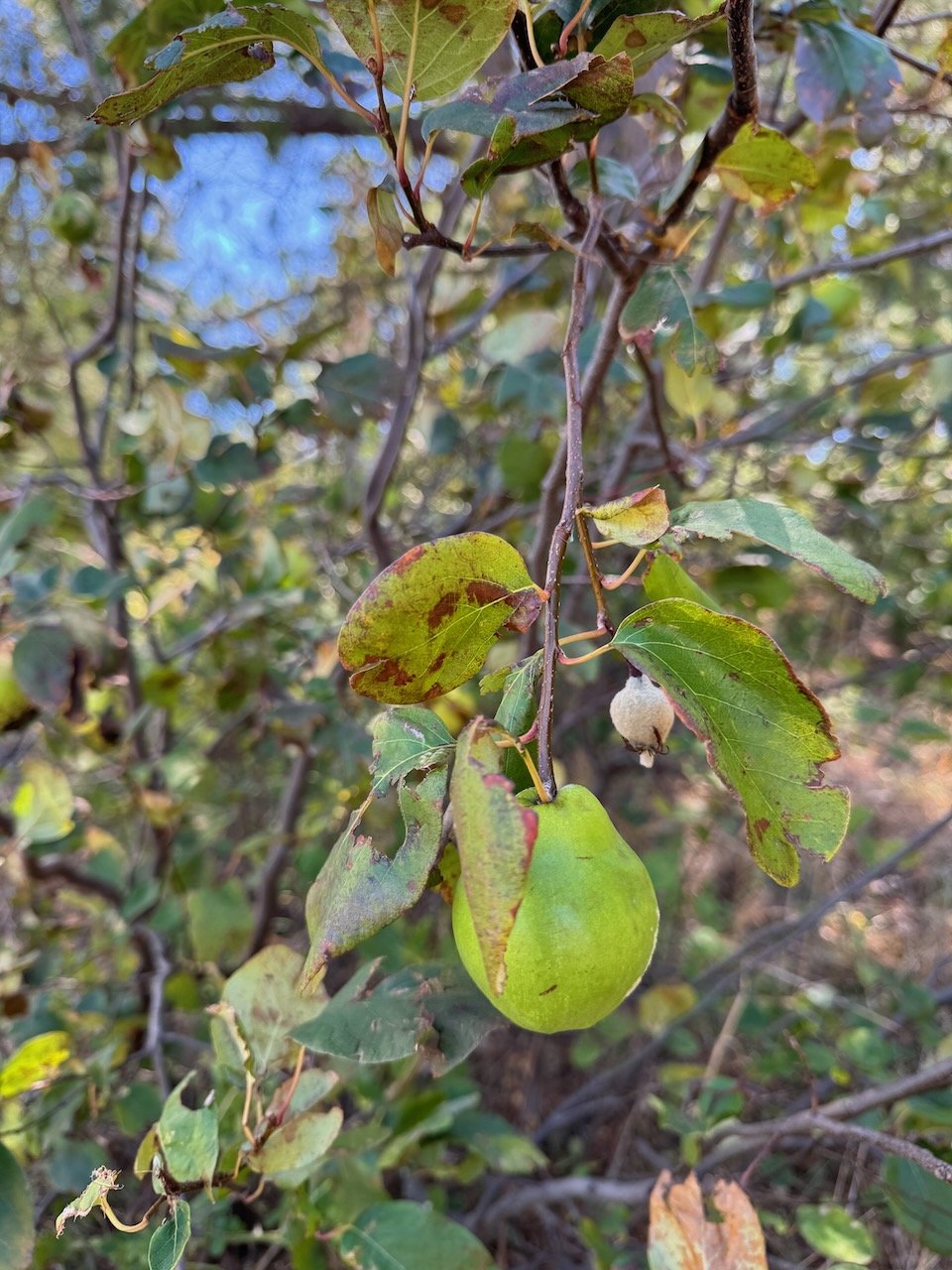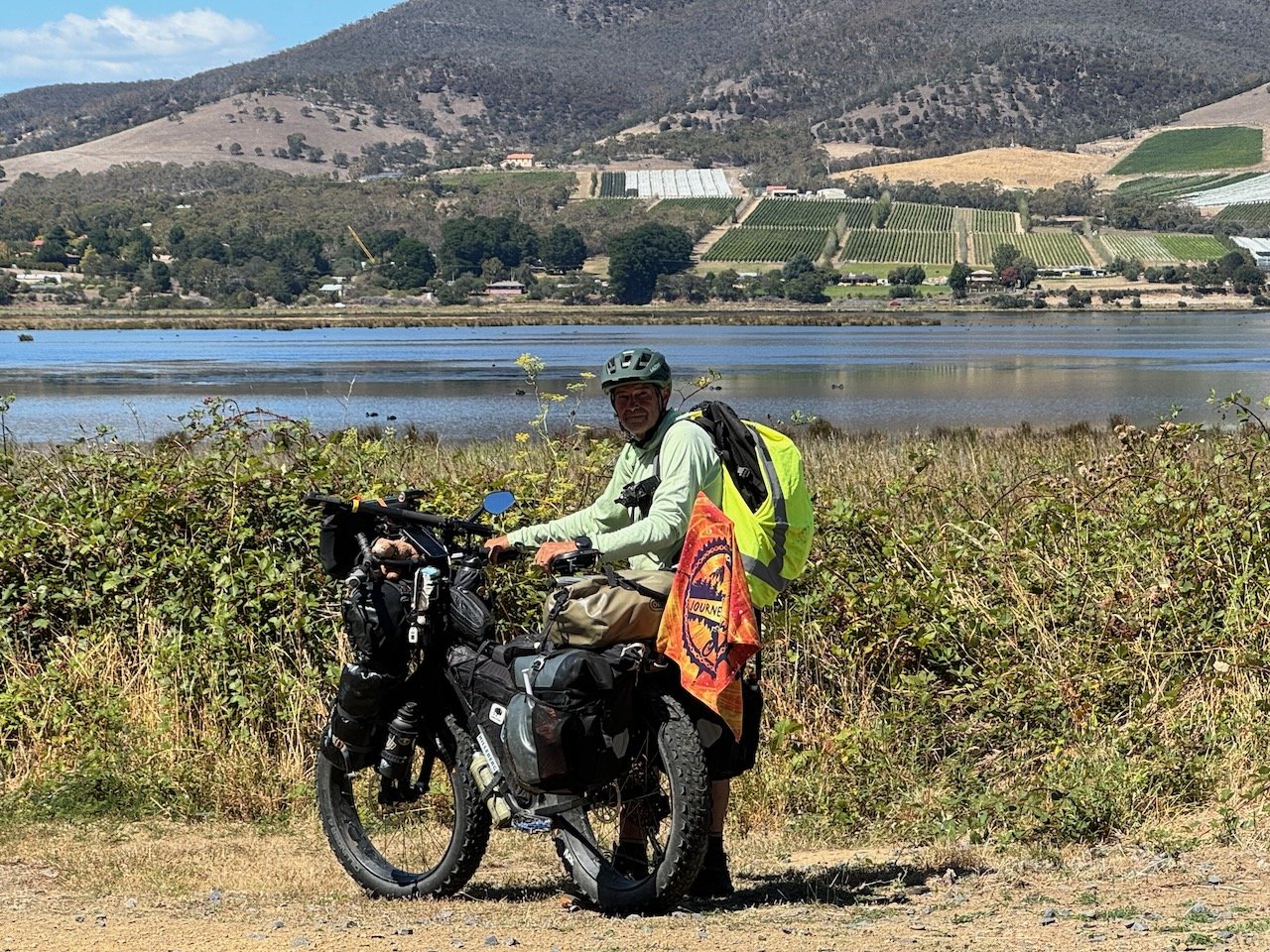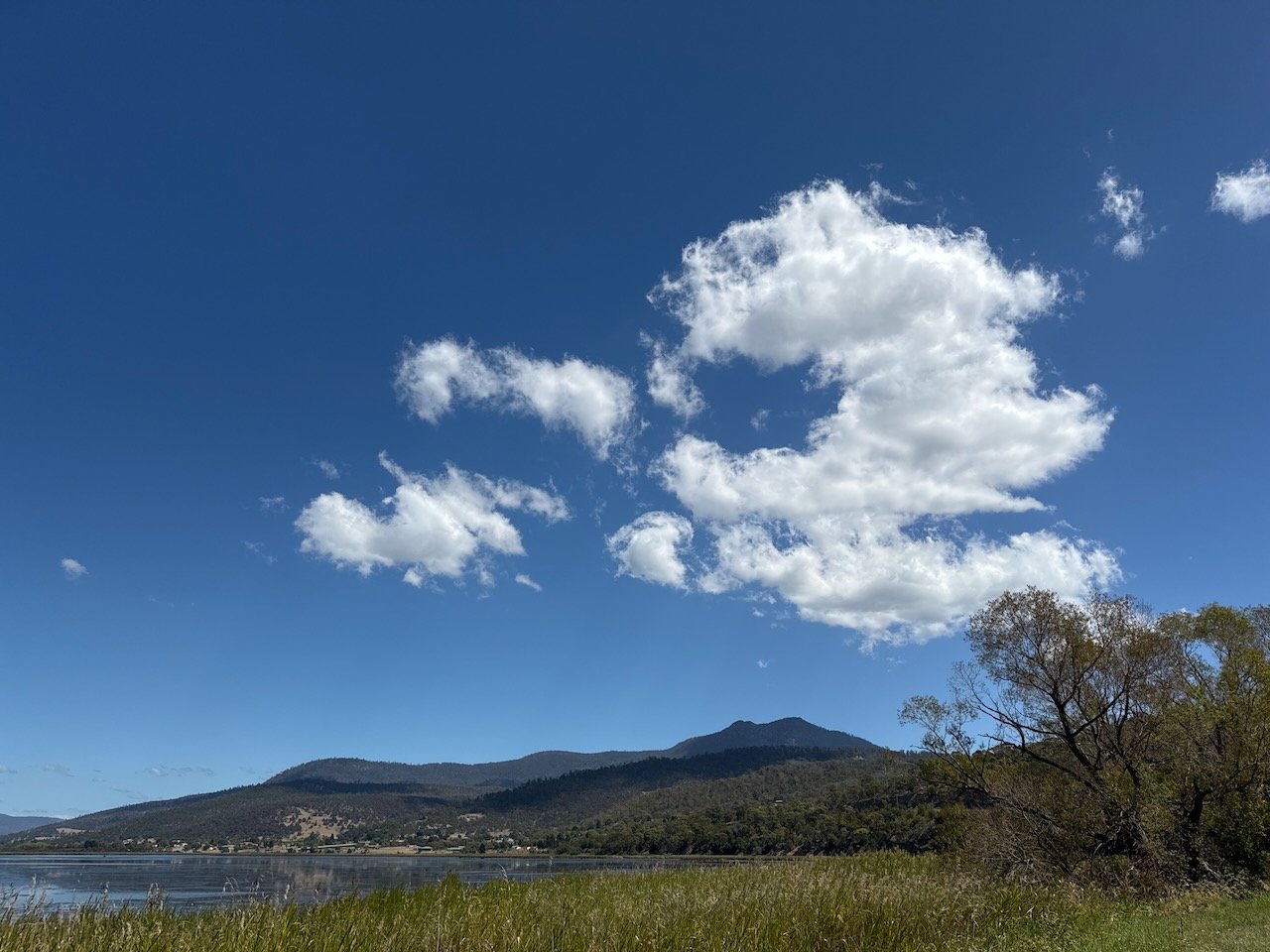Hobart-Bound ~ AUS Post #22
February 3 - 7
Ouse
We left camp the next morning and continued along the edge of Dee Lagoon past two other campsites that were much smaller and more wind-exposed, reinforcing how lucky we were to have stopped at the first one to ride out the storm. Within a few kilometers, the forest was behind us, ahead was a glorious descent through plantations of pine and farmland to the town of Ouse. We had crossed over the Tasmanian trail along the way and in town was a free camp at the fairgrounds for those traveling the trail on foot, by bike or horse. After refueling at the pub and stocking up, we spent the night with a flock of sheep grazing the paddock. Sheep, unlike cows, seem to have a deep-seated mistrust and disdain for cyclists. They clearly resented having to pass within a few feet of us to get to the water trough that was fed by the spring near the dunnie. The males stared us down each time, as the ewes scurried behind them to the trough.
The next morning we awoke to a golden glow lighting up the grass-covered hillsides and had to remind ourselves again that we weren’t in eastern Washington. Our next destination was only 12 miles away and mostly flat - with time on our hands, the most sensible thing to do was stop at the Distillery along the way. Rolling down the entrance, we could see the ornate iron work outlining the roof and veranda of the estate from behind the English garden adorning the property with a variety of trees, bushes and flowers. The distillery was housed inside one of the historic barns overlooking the River Ouse. A small family-owned operation, our tasting was hosted by the owner and his son. After sampling both whiskeys and gins, we poured our favorites into plastic flasks, kept the ornate cork as a souvenir, and headed for Hamilton.
Hamilton
Hamilton was a frontier town in the mid-1800s with many inns and breweries. When we arrived, the Hamilton Inn bar and cafe were the only ones we could find in operation. Next door was a small campground next to the creek where we camped with a few other travelers accompanied by the local wildlife. During the night the only sounds I heard nearby were Devils screeching along the creek below, but apparently there were actual sinister beings on the prowl. We learned early that morning, some “hoons” had made off with the honesty (ironic) pay box for the campground. The walkways around the parking lot were already taped off and the investigation was underway.
The scene made it all the more evident, we were no longer in the wilderness, but at the edges of “civilization”, where the drawbacks can make it feel like somewhere to simply “get in and get out" as quickly as possible.
Our next stop before reaching Hobart, was 25 km away in New Norfolk. We decided to have a quick breakfast at the cafe and then pack-up. Along the way, we dropped into a valley filled with cherry orchards, where the road wound alongside the River Derwent, and could have easily been mistaken for a scene in the Wenatchee valley. Although we will always miss our “Rainier” cherries - these bings were a taste of home!
New Norfolk
At the caravan park, we met a father and daughter bike packing the Tasmanian Trail and joined them for dinner at a local pub. When we returned just after dusk another bike packer riding the trail had sidled in between all of us. After watching them all take off the next morning, we set about doing our camp chores and decided to stay a couple nights before venturing into Hobart. Caravan parks for us were becoming “meet-ups” - our human-powered caravan on two-wheels, an endless conversation-starter.
Hobart
We finally decided on a route into the city, contrary to advice from the locals to avoid the bridge construction. Neither one of us wanted to make the ride into Hobart any longer or steeper than necessary being in a river valley with hills/mountains on either side. By crossing back over the river, we had several rolling hills, but all were fairly short in length, and within 16 kms we were able to hop on a river-side trail leading up to the bridge north of Hobart.
Even though the bridge was under construction, we were able to navigate up and across without too much angst. It wasn’t until we got to the other side and saw we had no alternative other than the main highway with a concrete barrier, absolutely no shoulder, and a very steep rise around the hillside, that my jaw dropped - it looked unsurvivable. Assessing the situation from a make-shift pullout next to the main construction site, Nivaun backtracked around to talk to the brawny Aussie in high-vis standing guard at the construction gate, while I stood there looking petrified to dispel any doubt that we needed assistance.
Within a few seconds, Nivaun was waving me over. The guard arranged an escort for us through the construction site over to the back road along the river, so we could reconnect with the bike trail leading into Hobart. Relieved beyond belief, I thanked him for saving our lives, and probably a few others. He smirked and nodded in agreement.
Within a few kilometers, the riverside trail turned inward and the outskirts of the city enveloped us. Our path now flanked in chain link fencing a few feet away from the railway line. Our landscape reduced to the backsides of buildings covered in graffiti. Throw in the cacophony of a tightly-packed population trying to get from A to B in the least efficient way on the planet and that about sums up our transition from wilderness to “civilization”.
We planned to stay one night at the Showgrounds in Hobart and then stop at the outdoor stores to replace some gear the next day before heading south toward Bruny Island.



